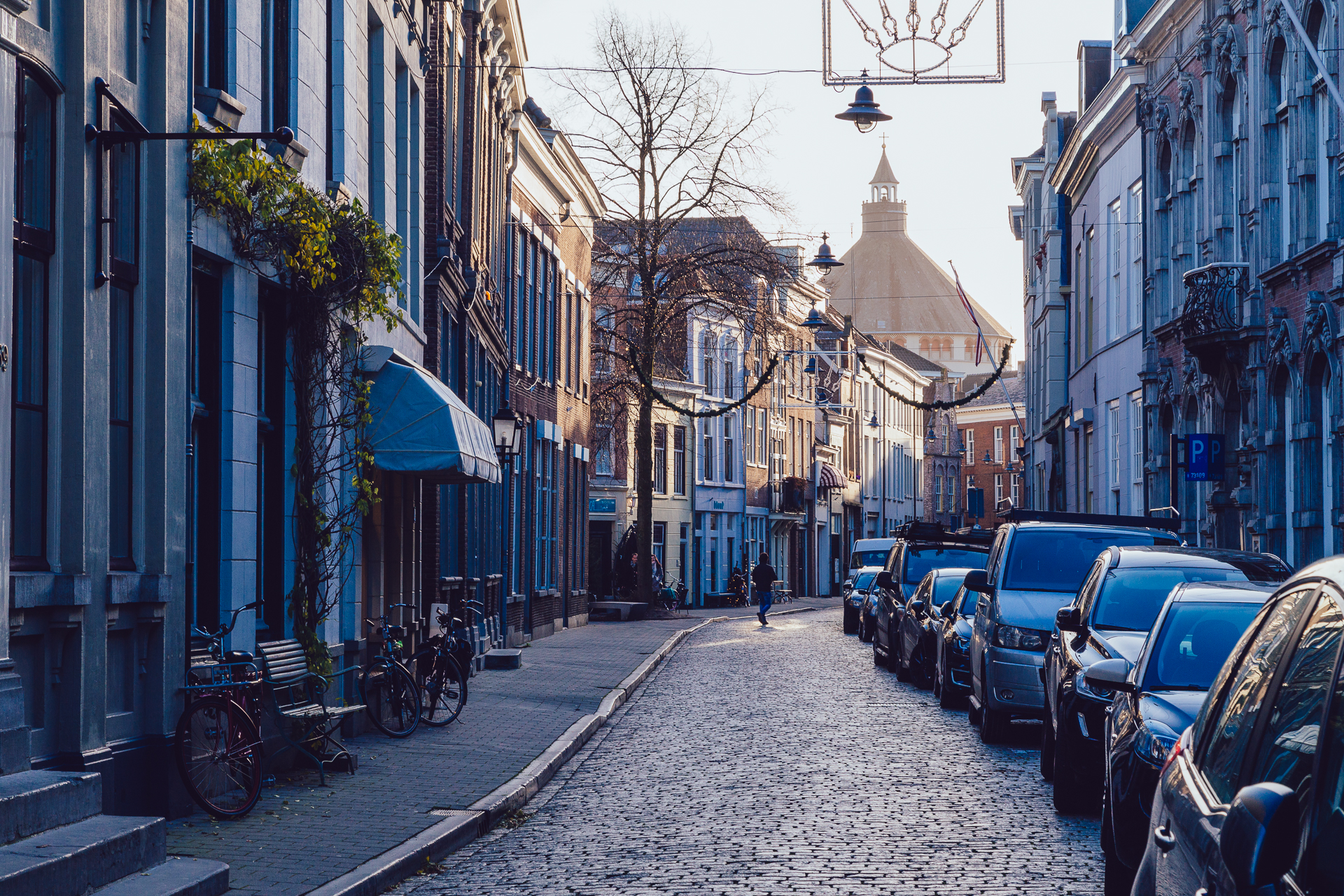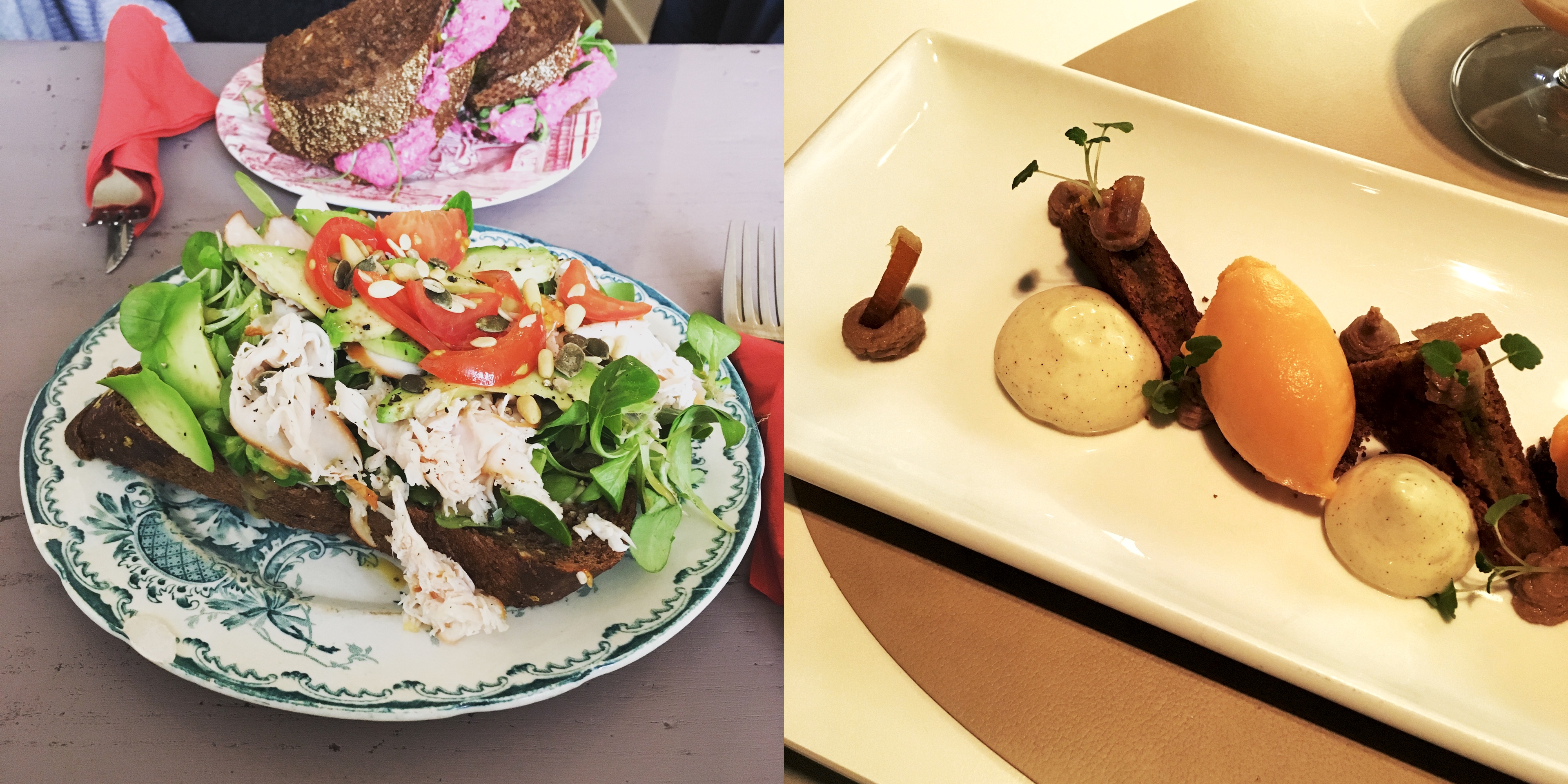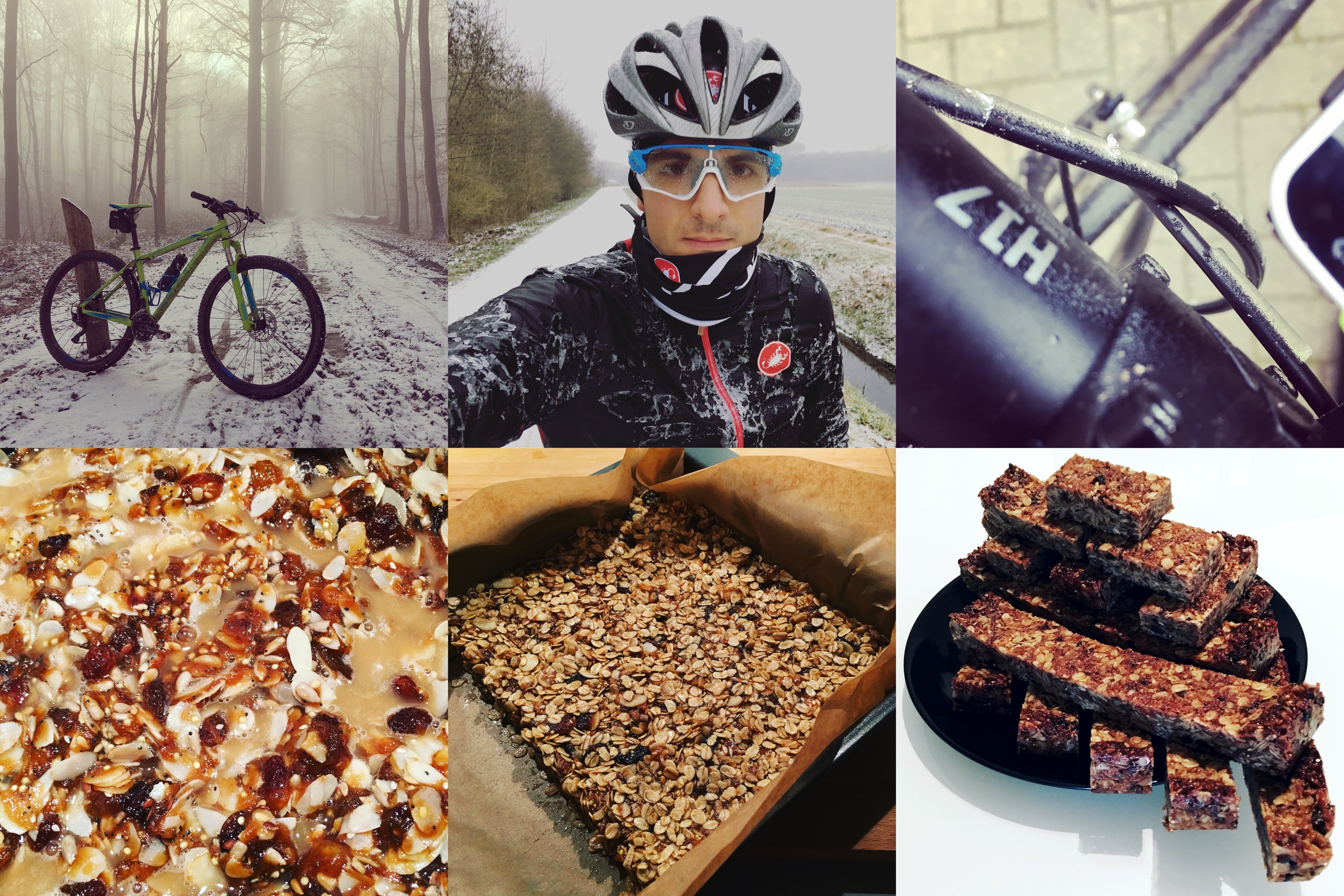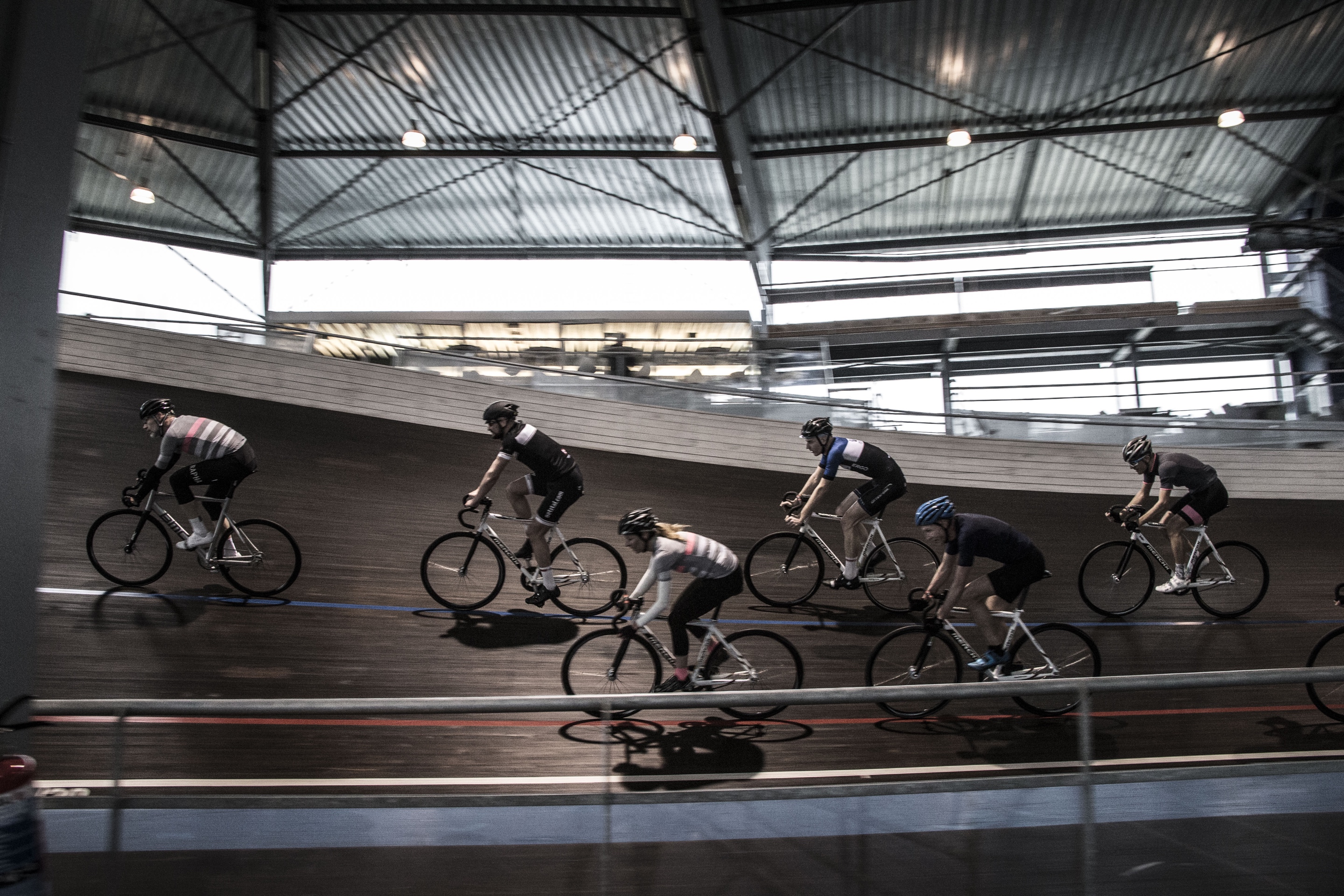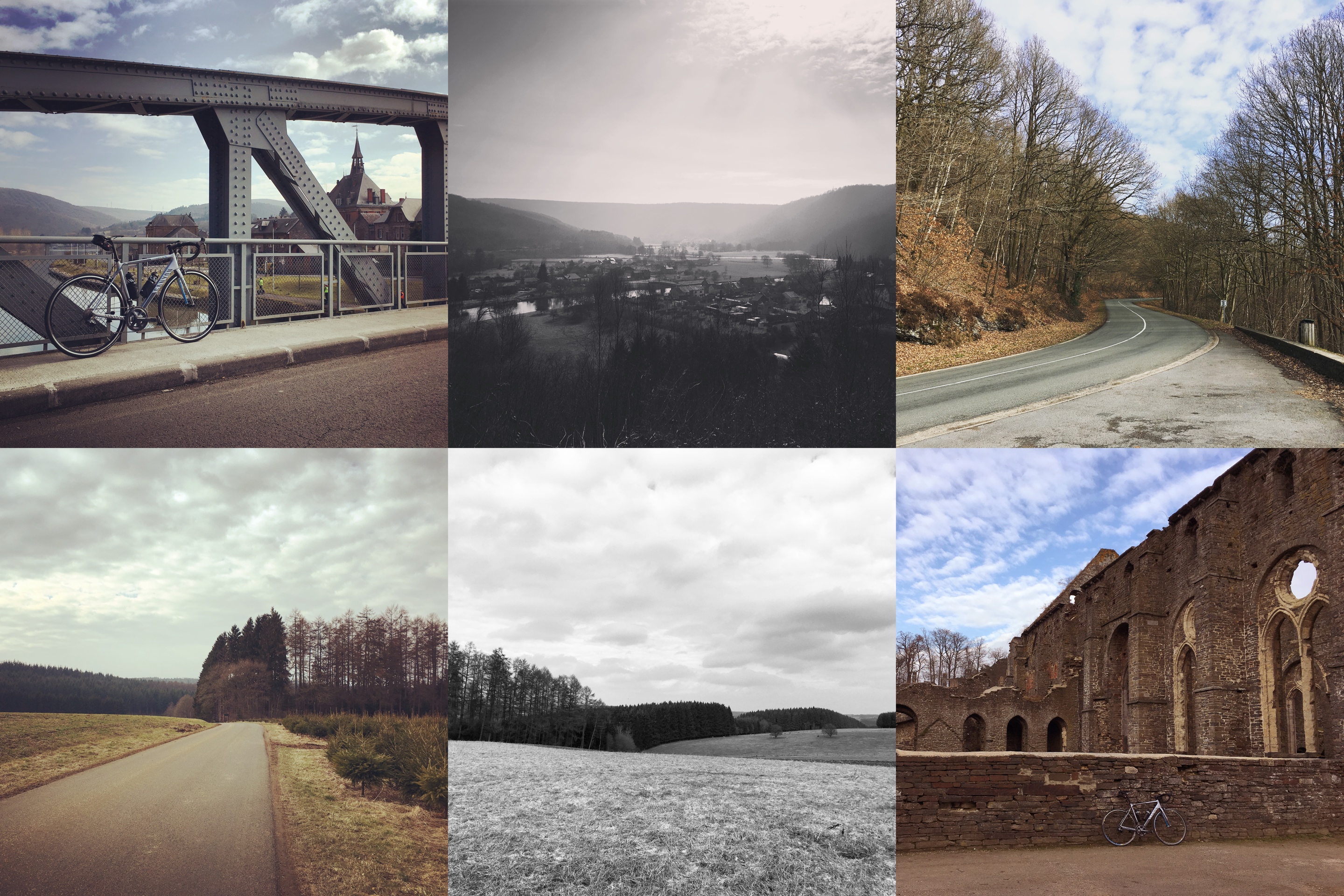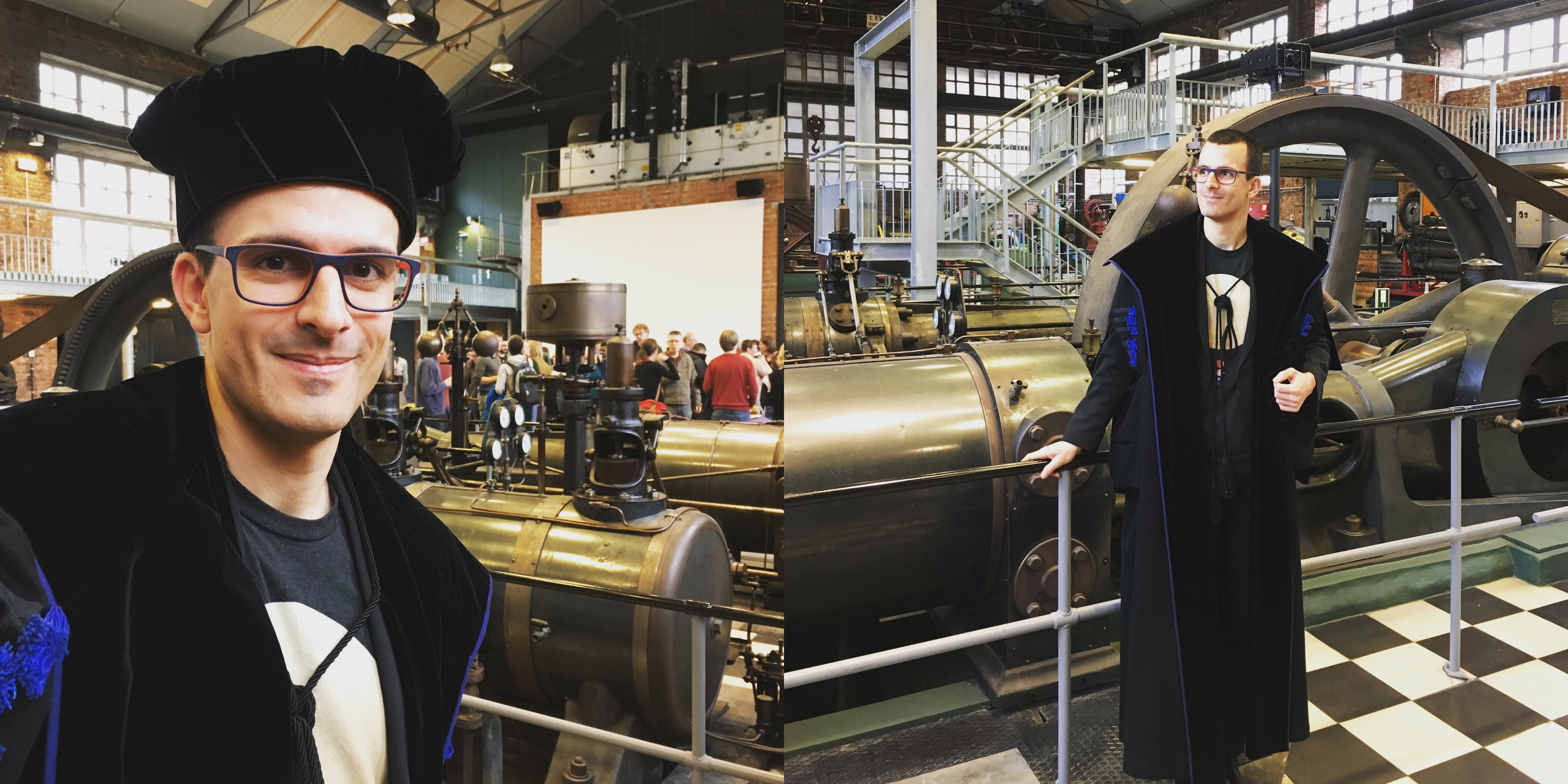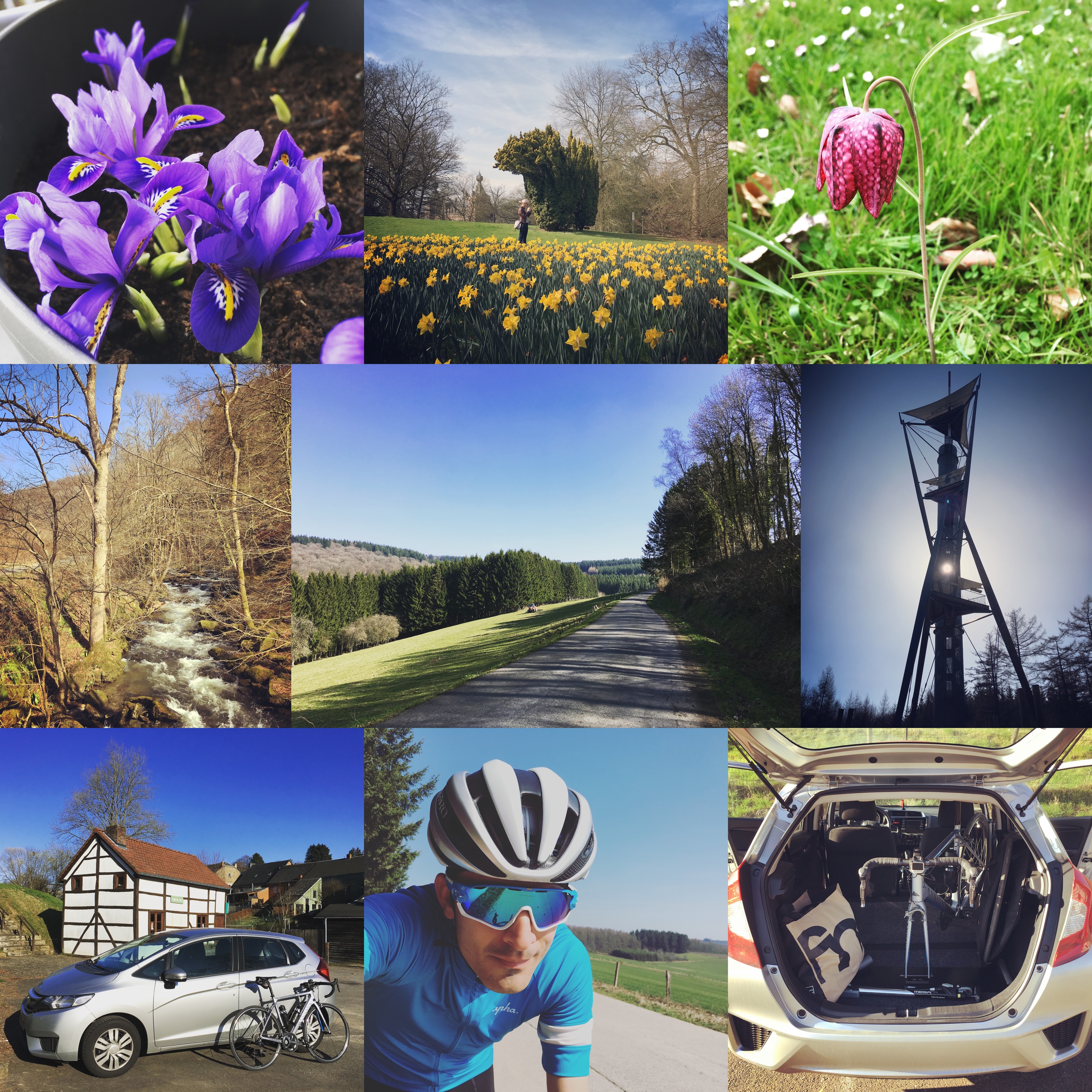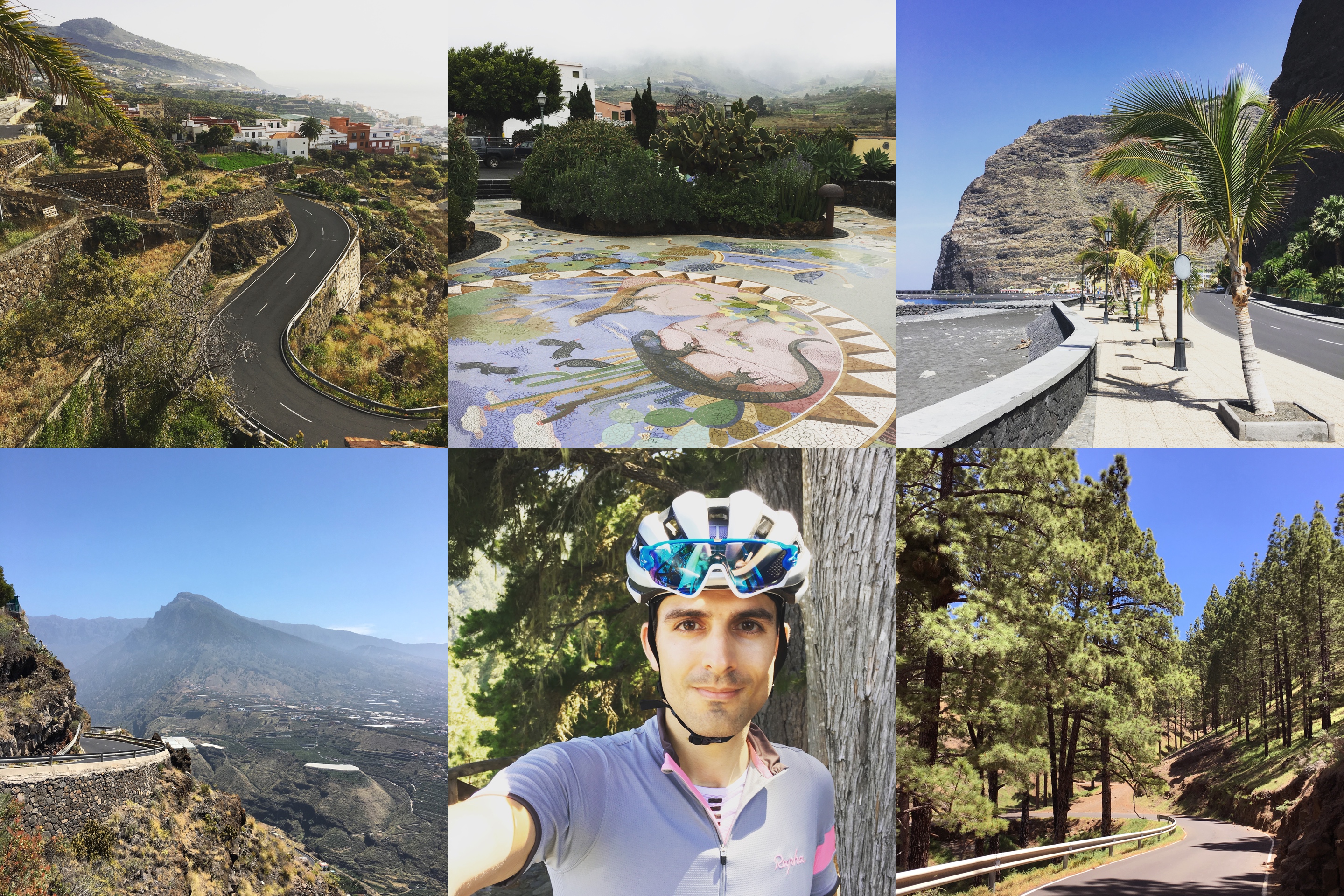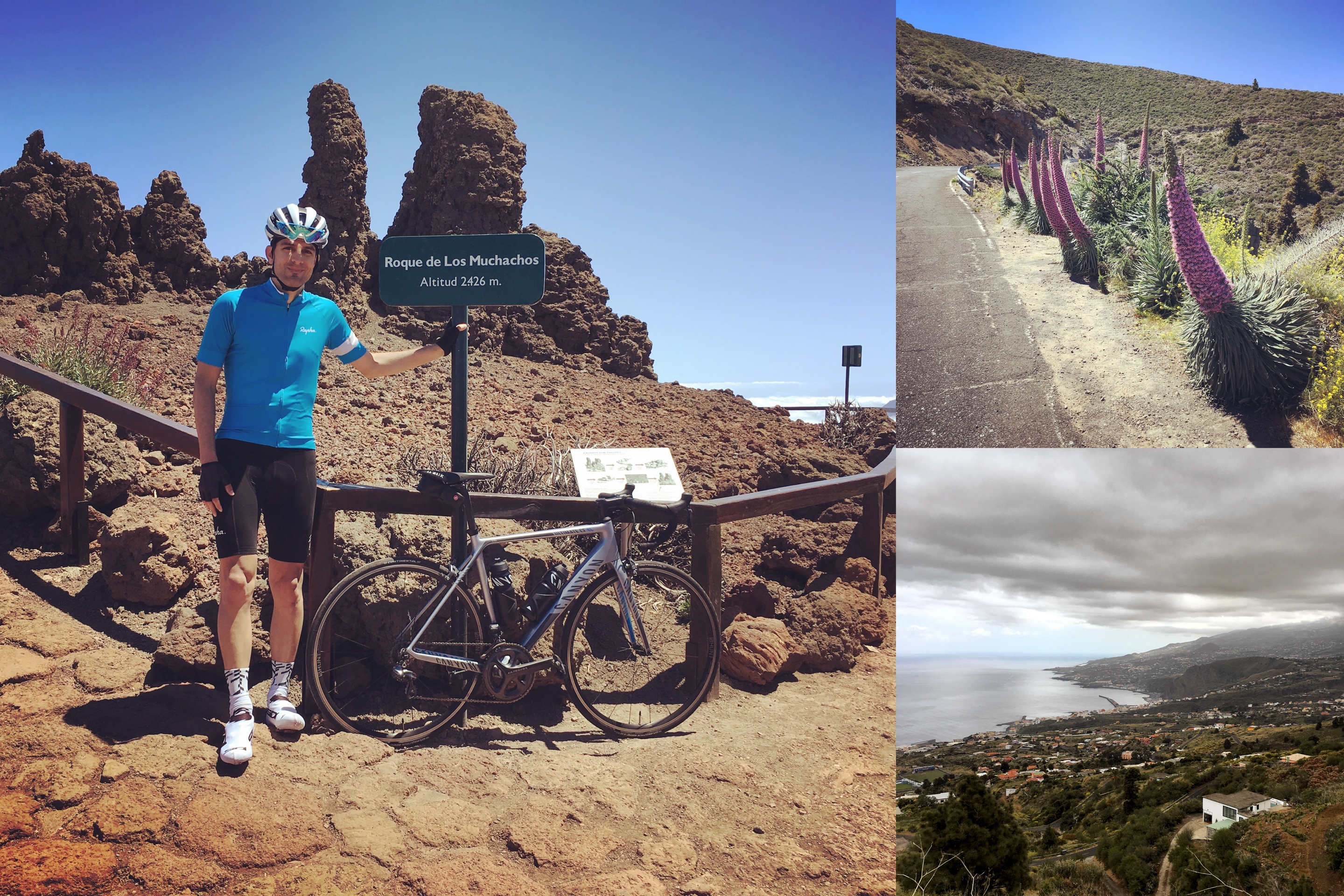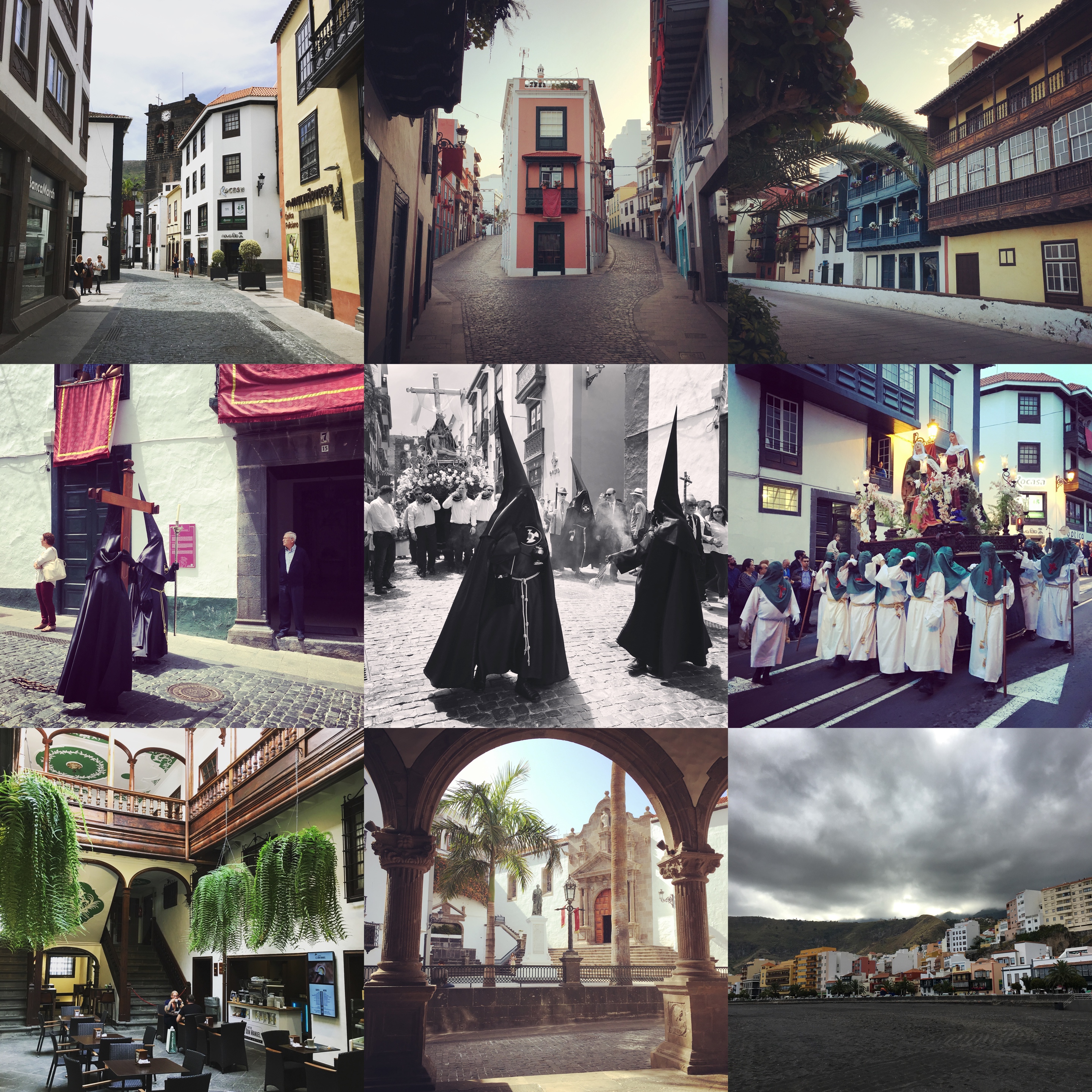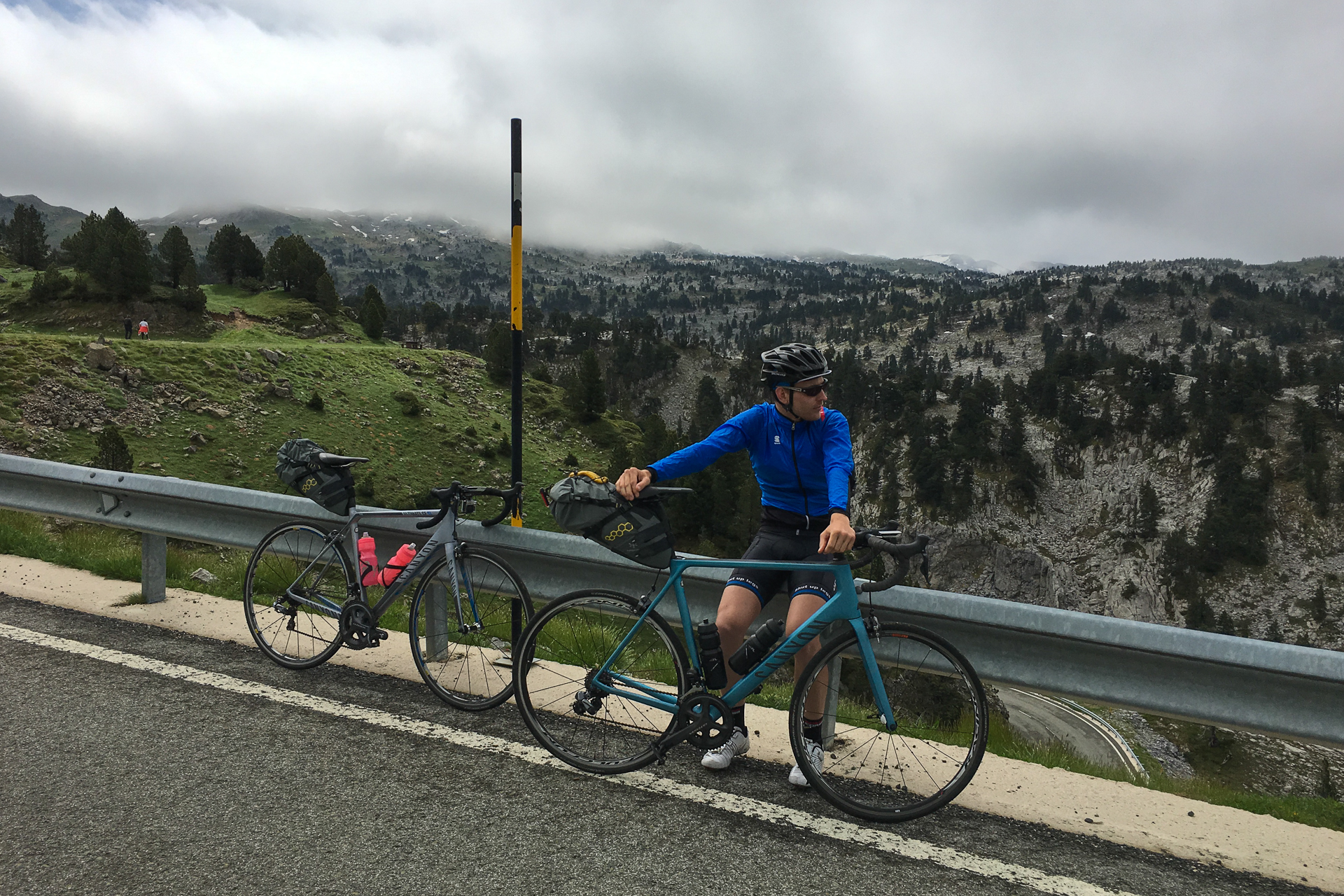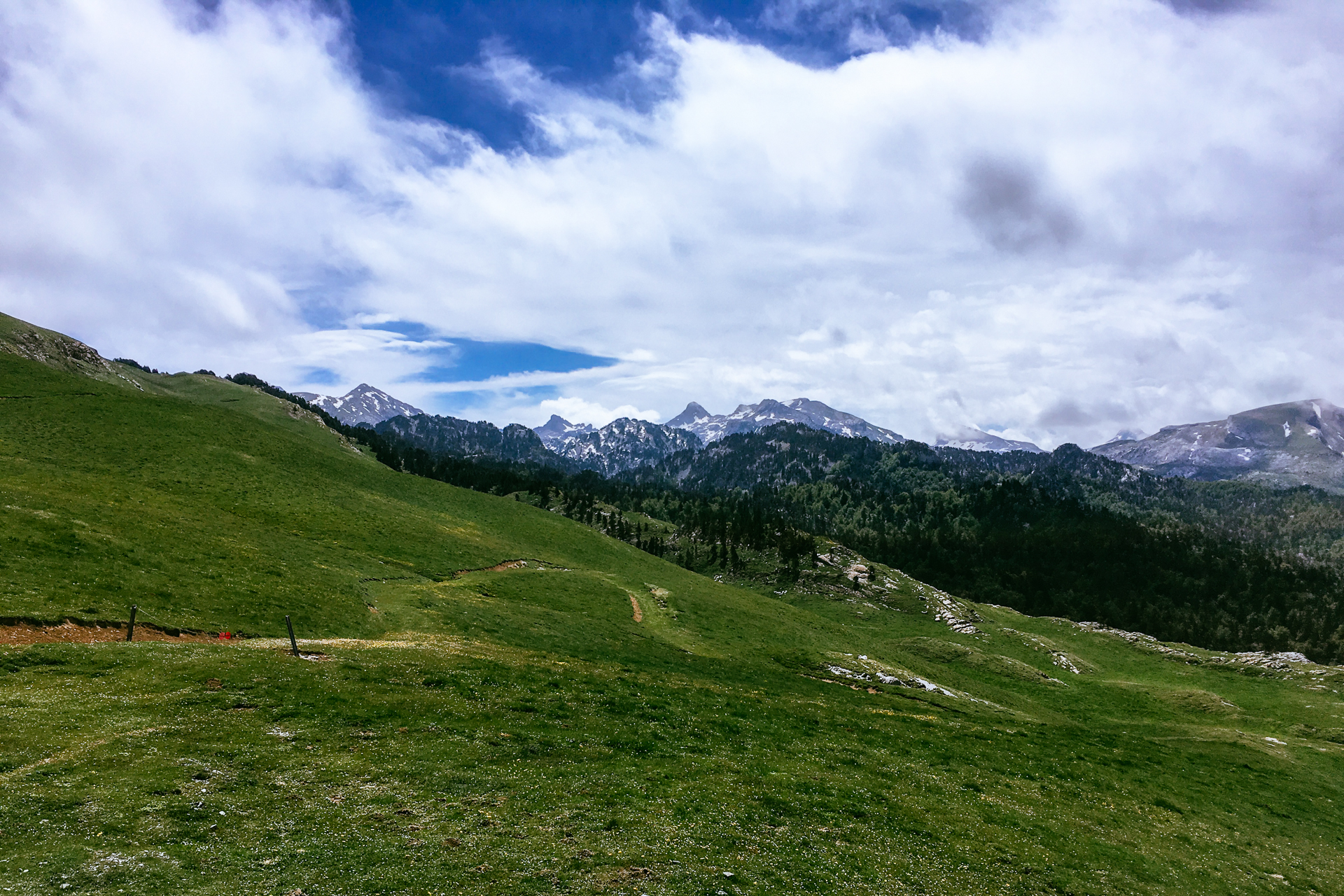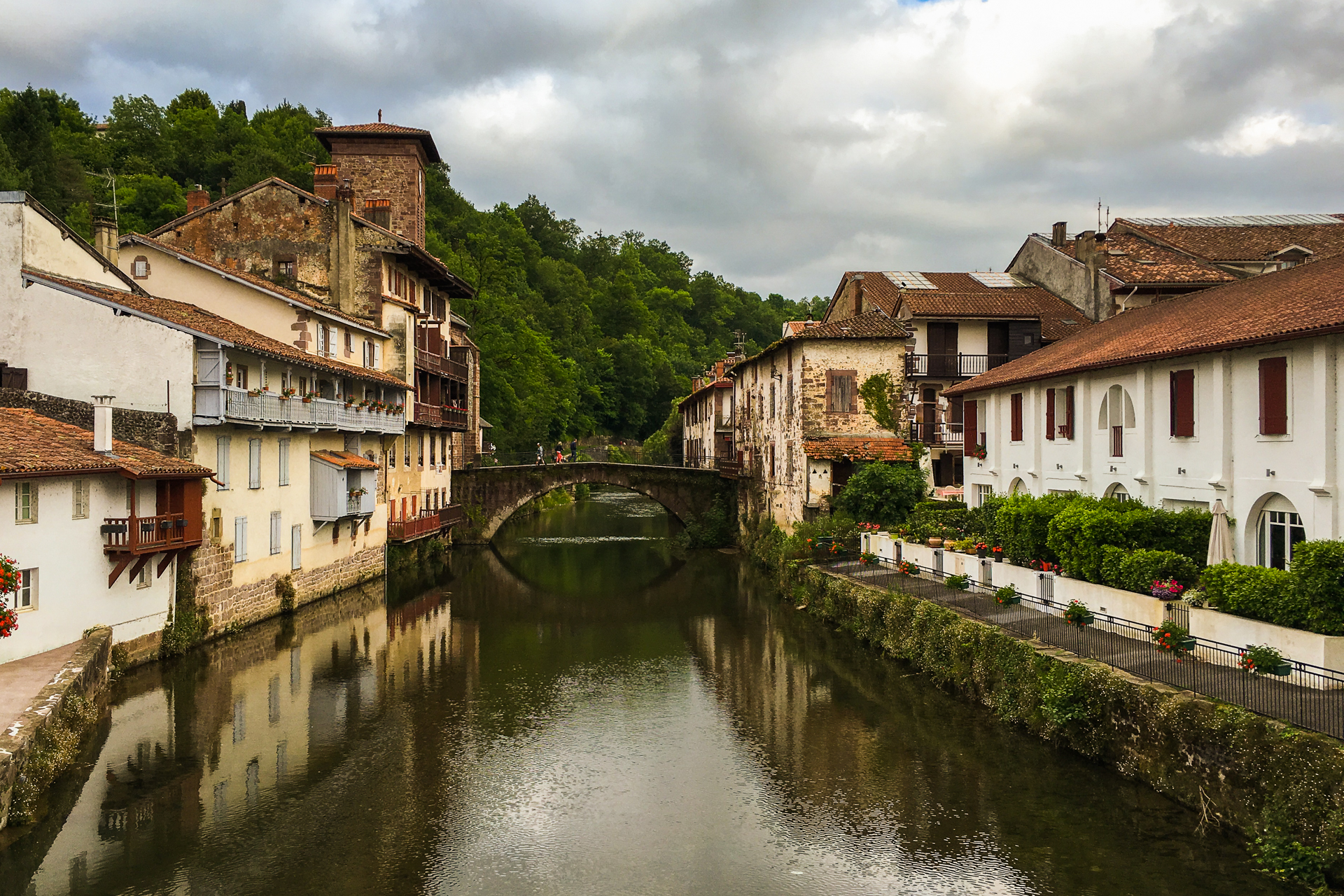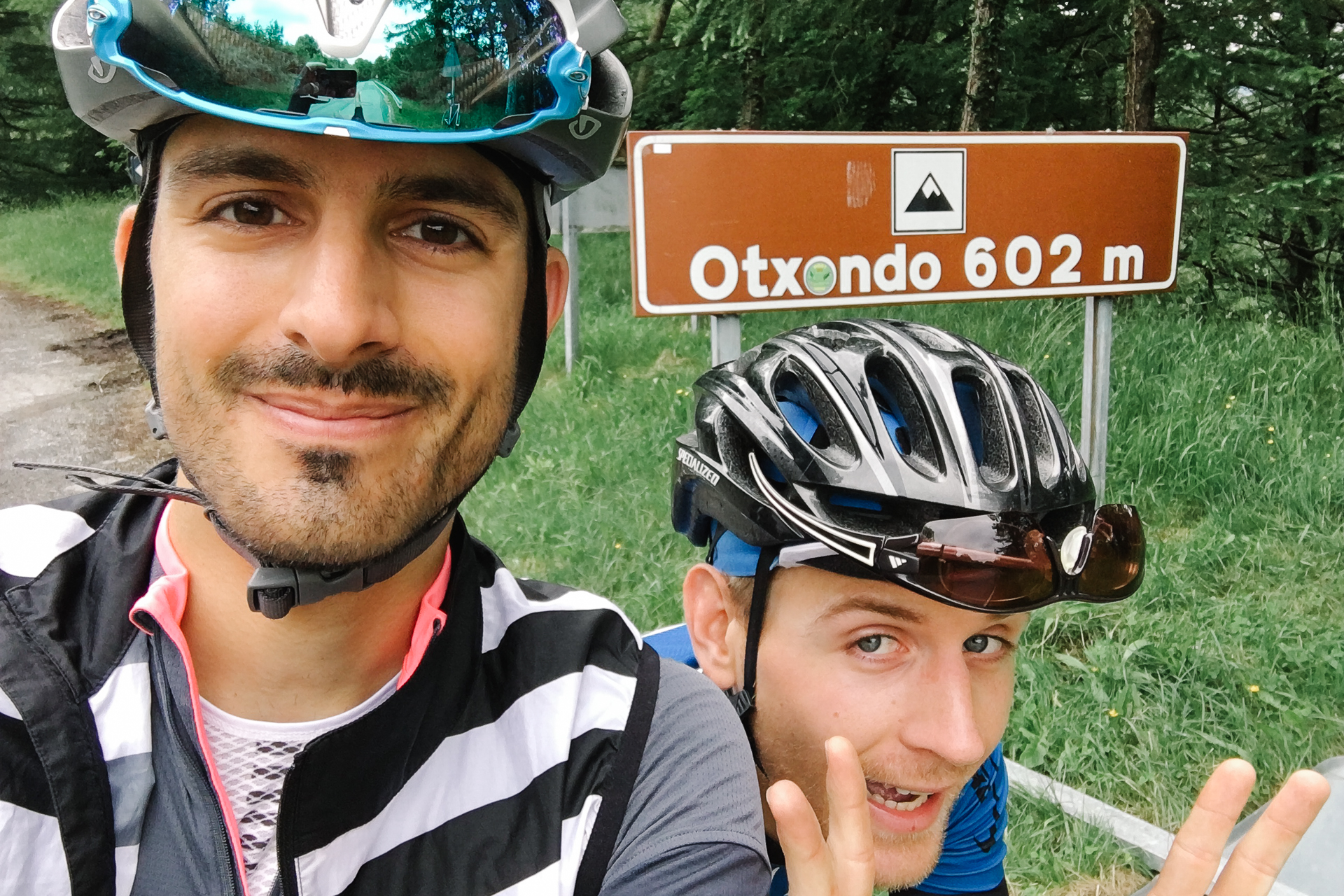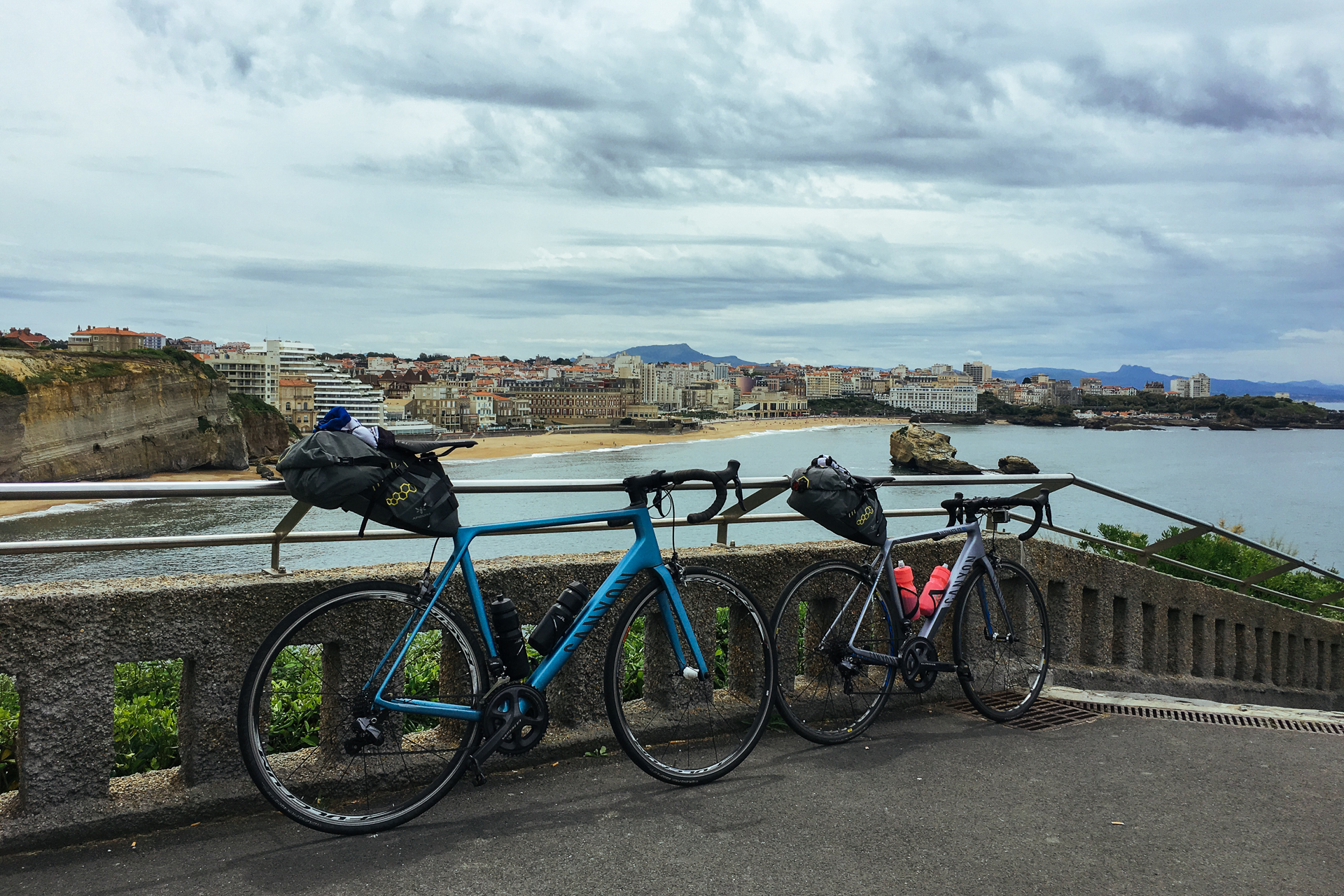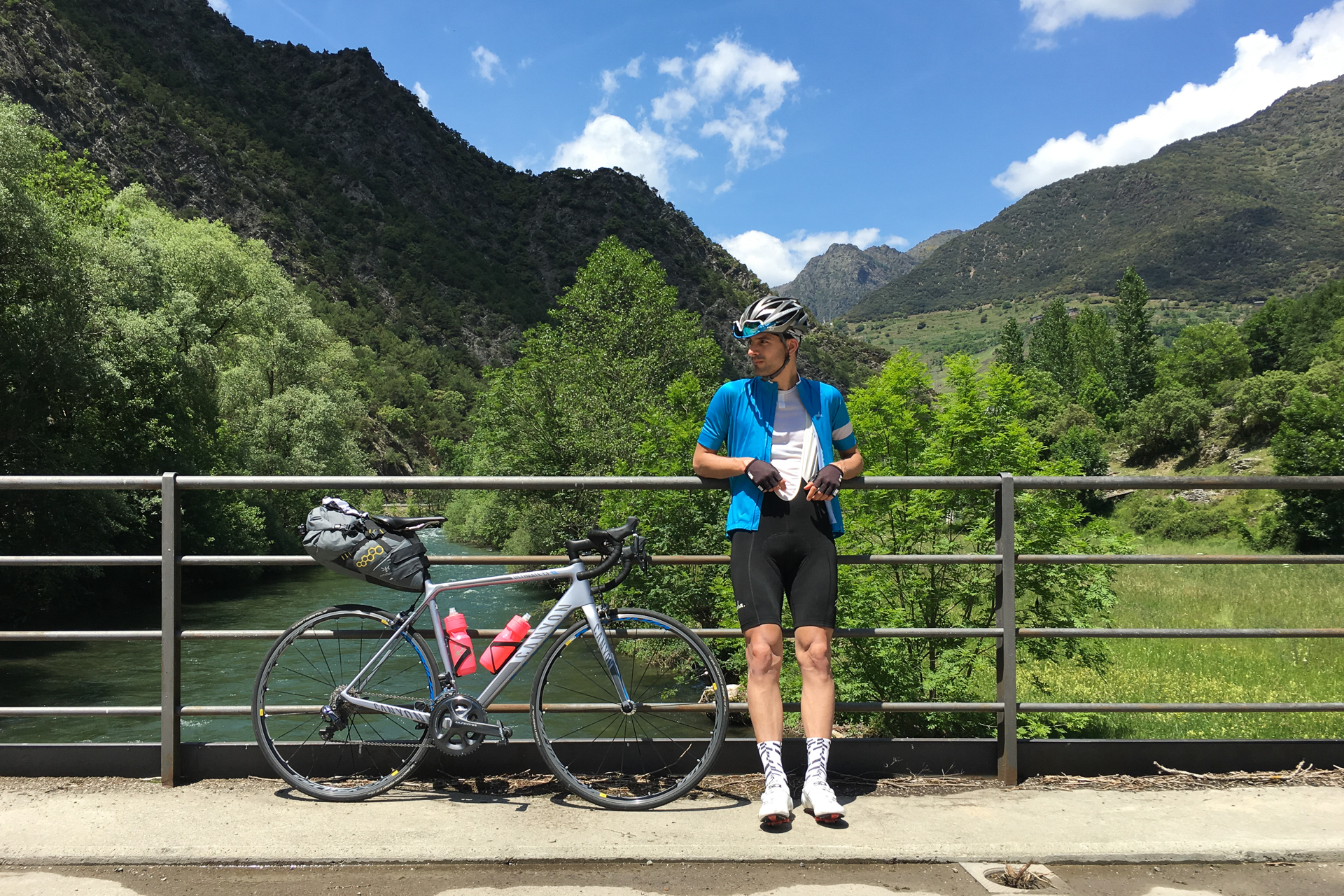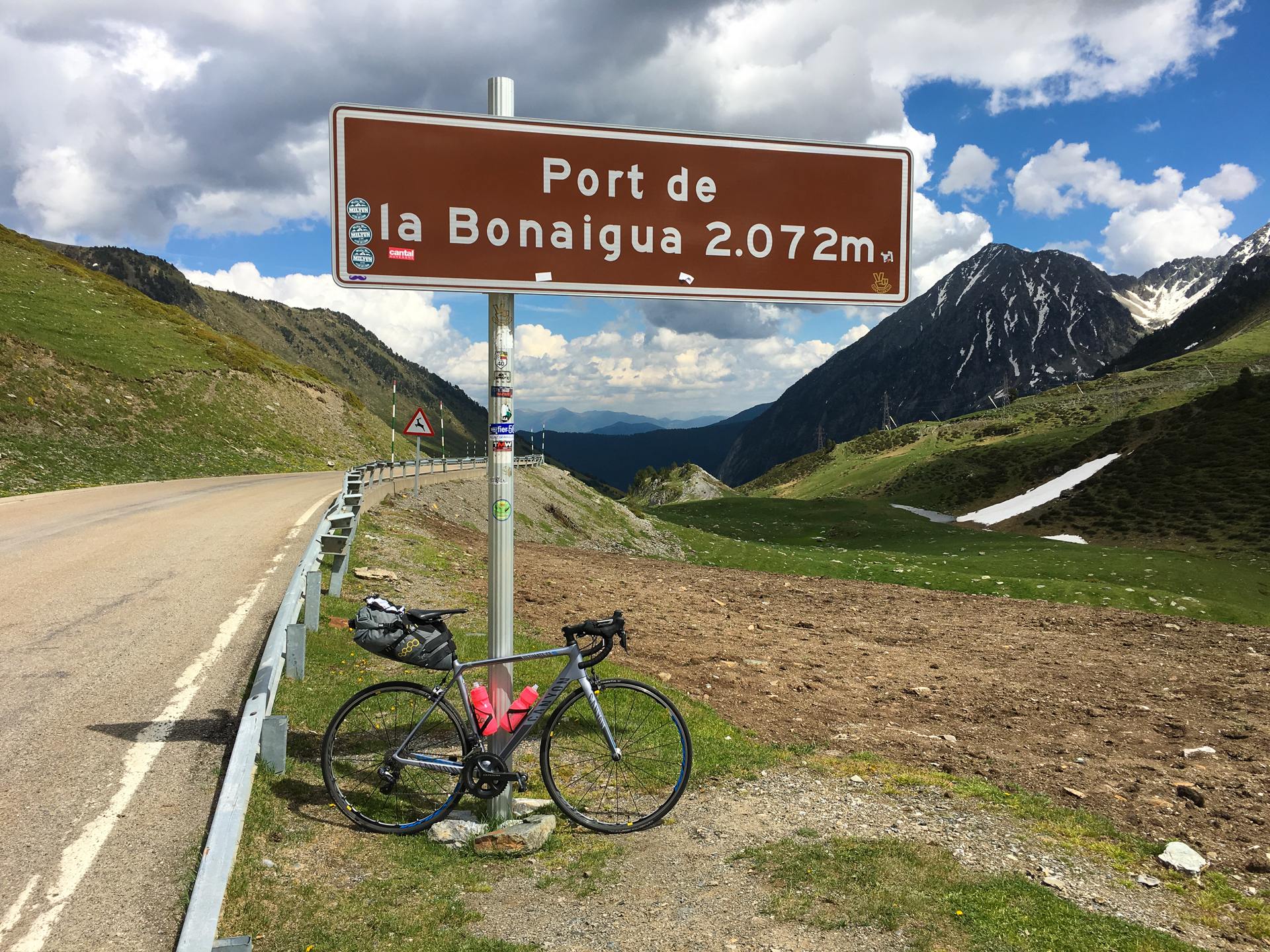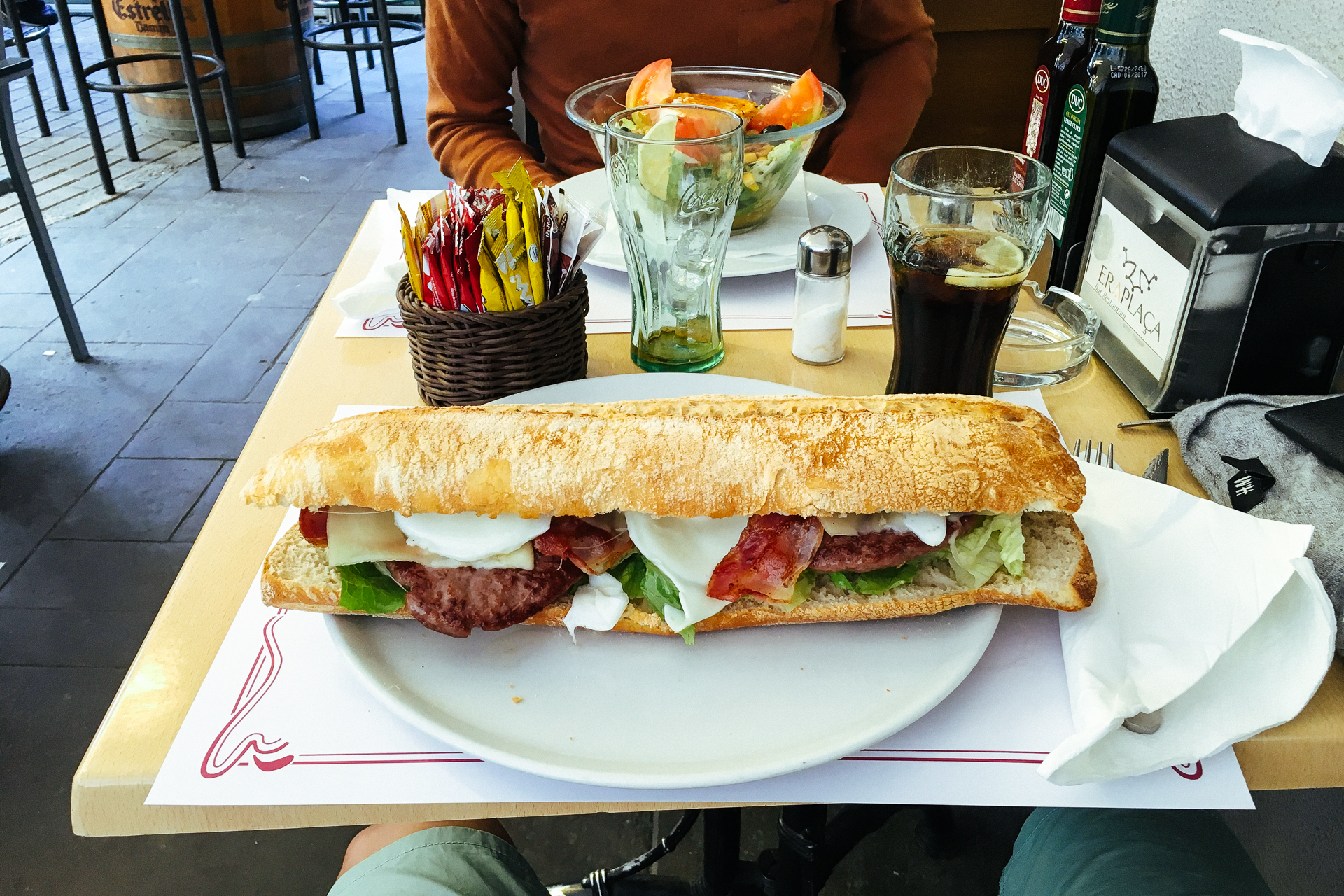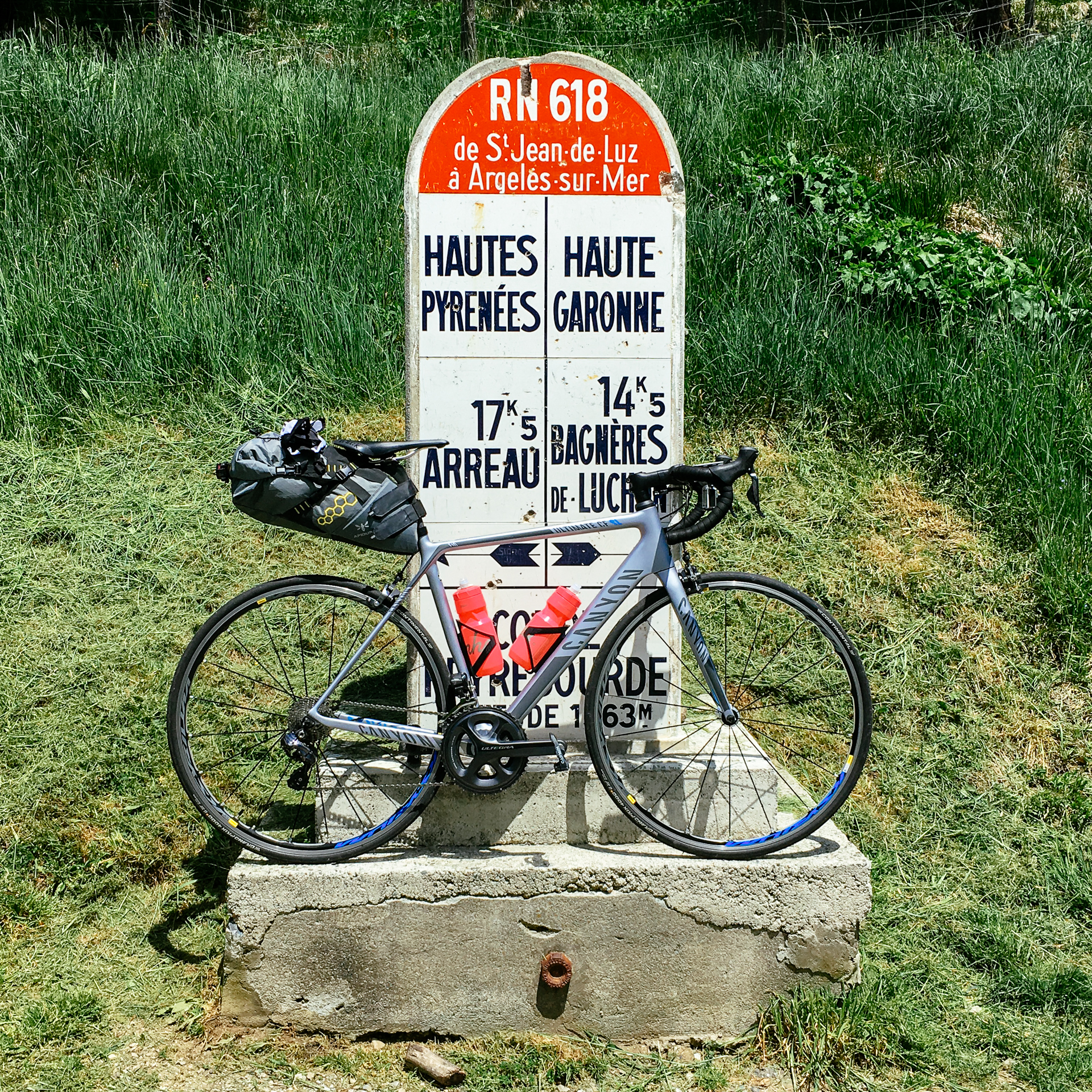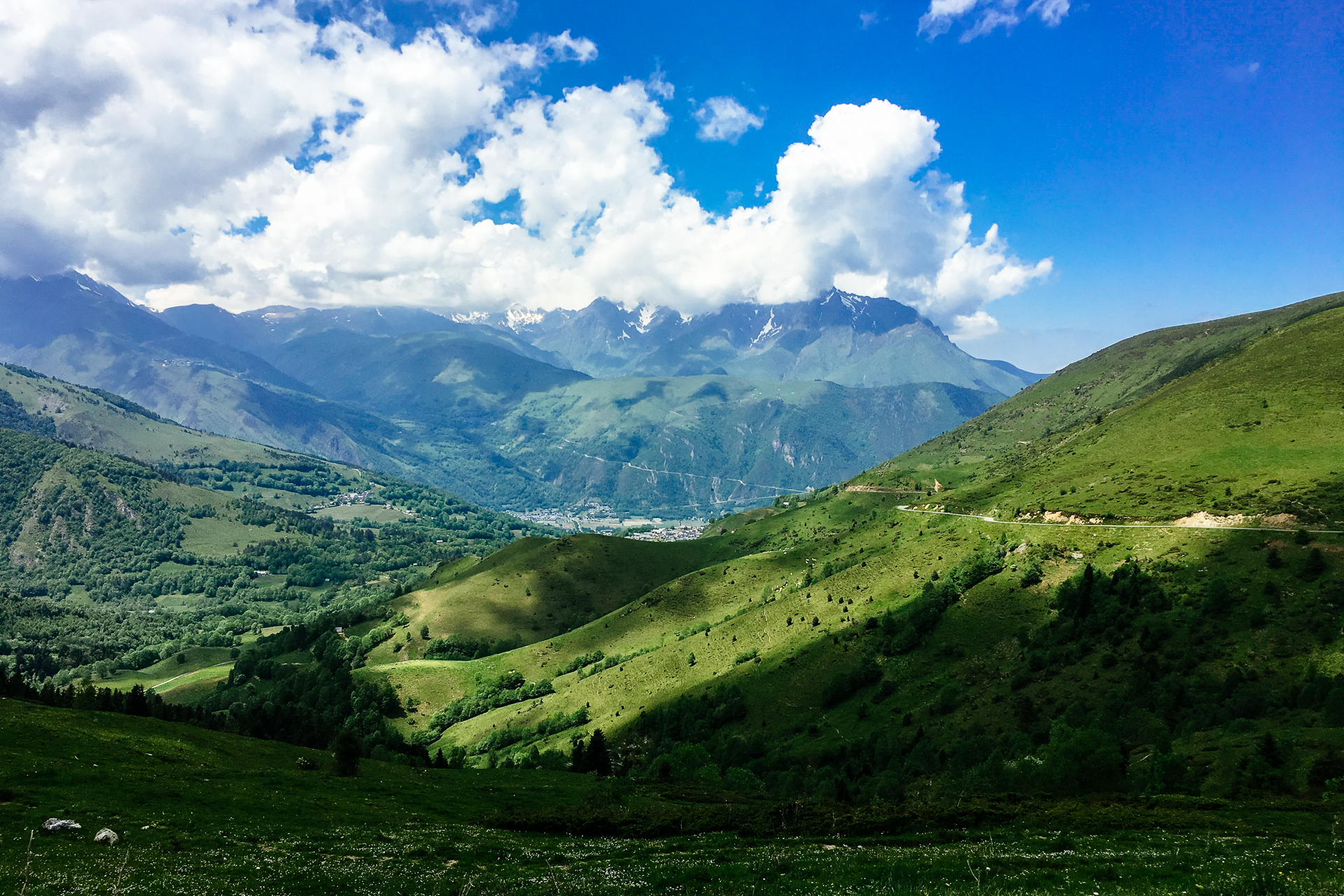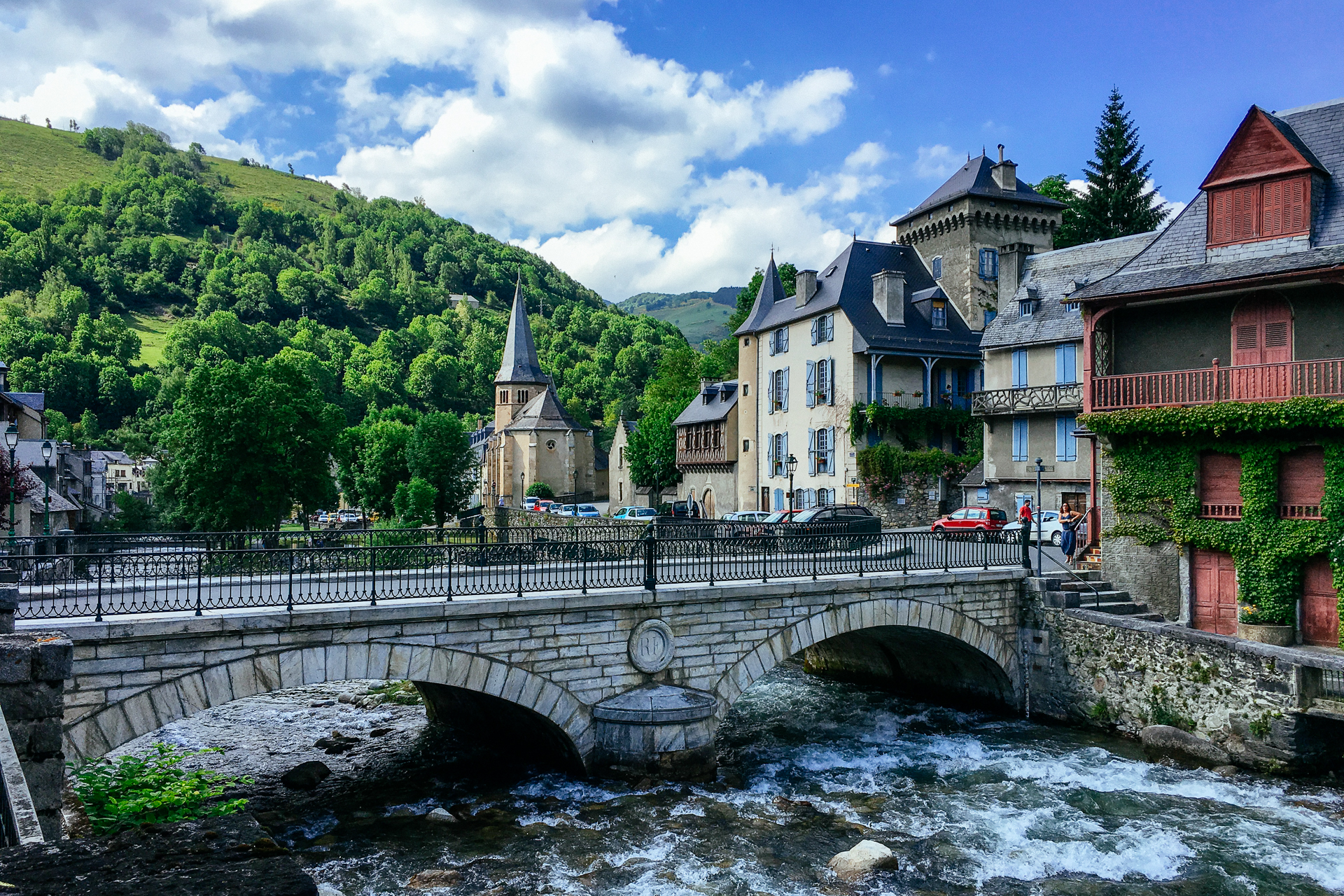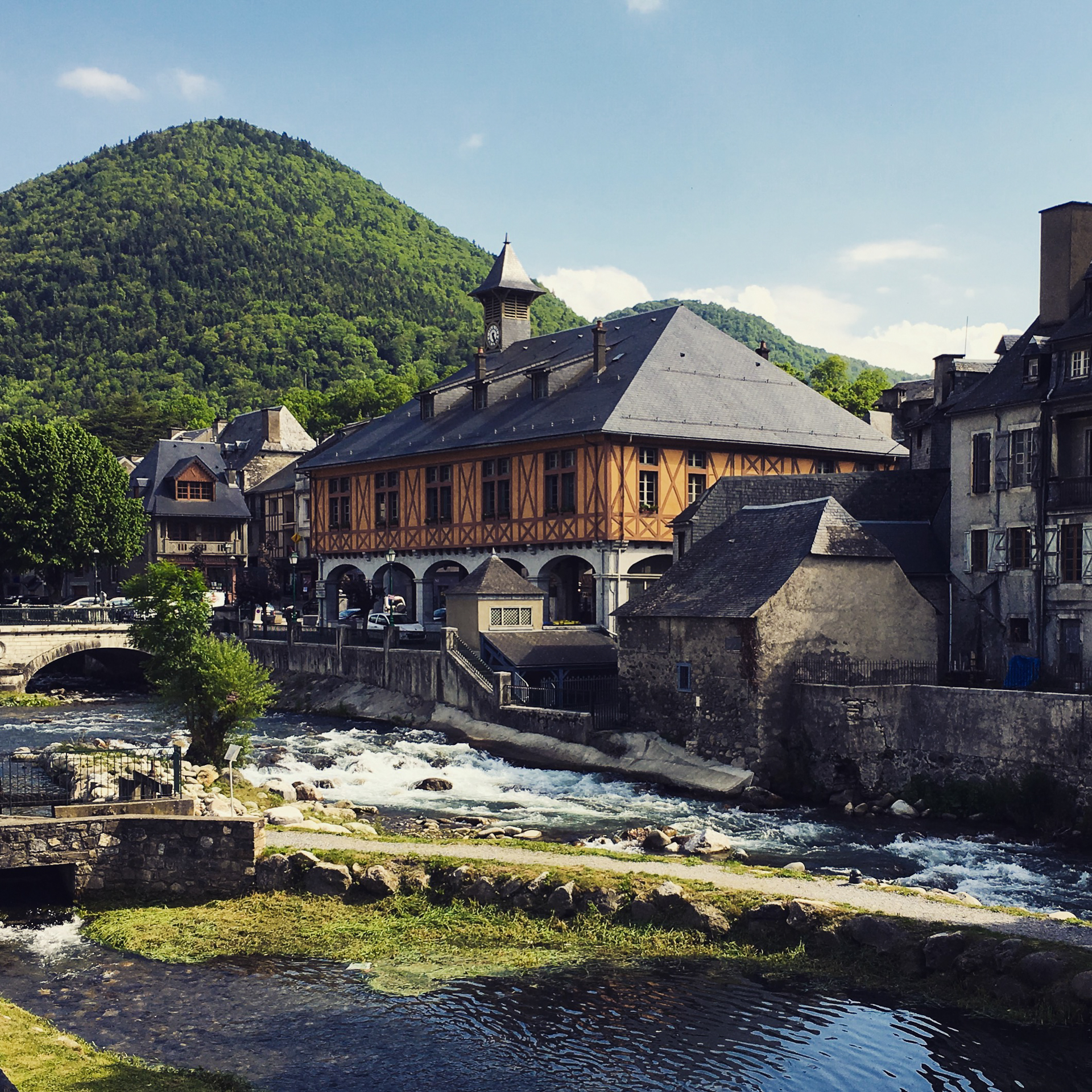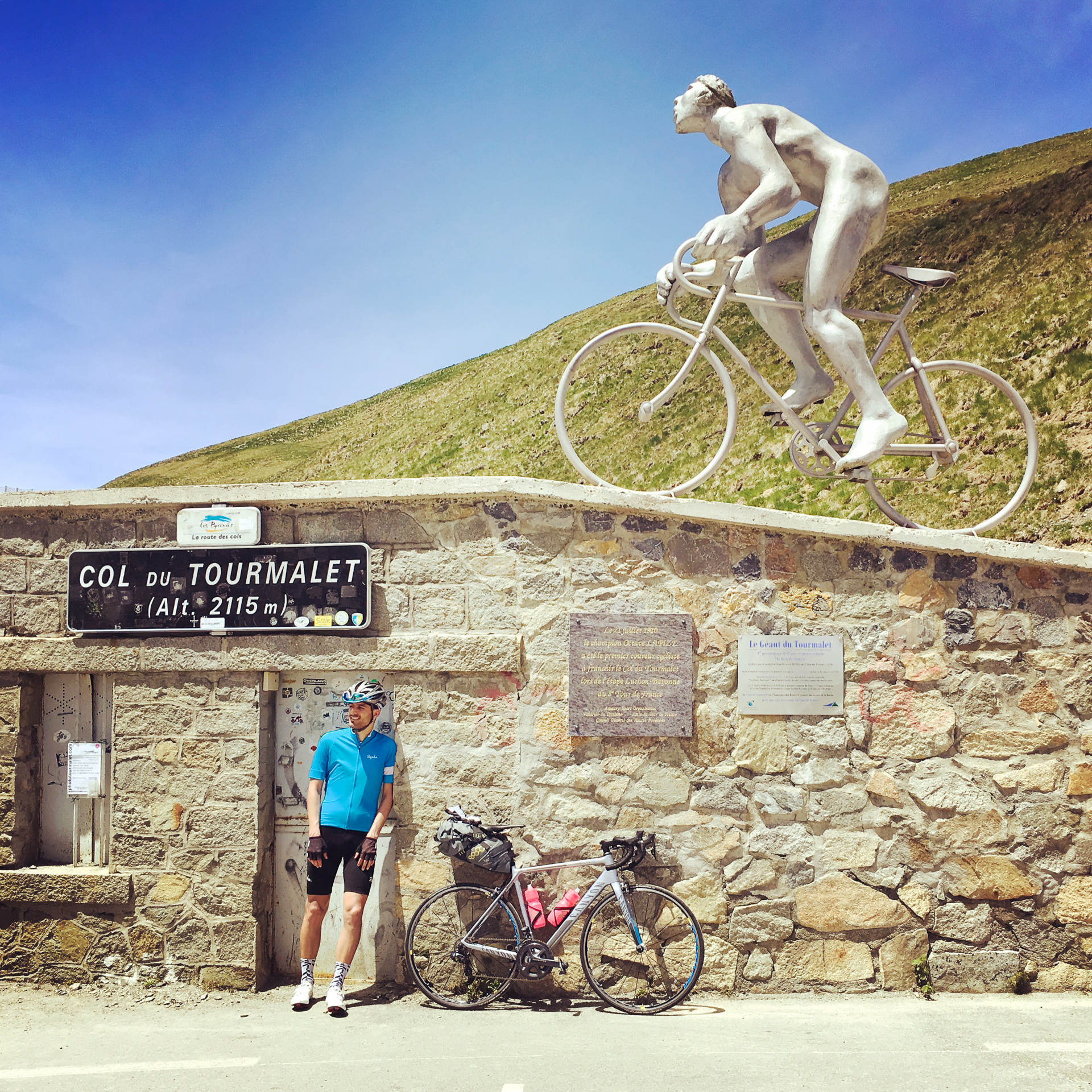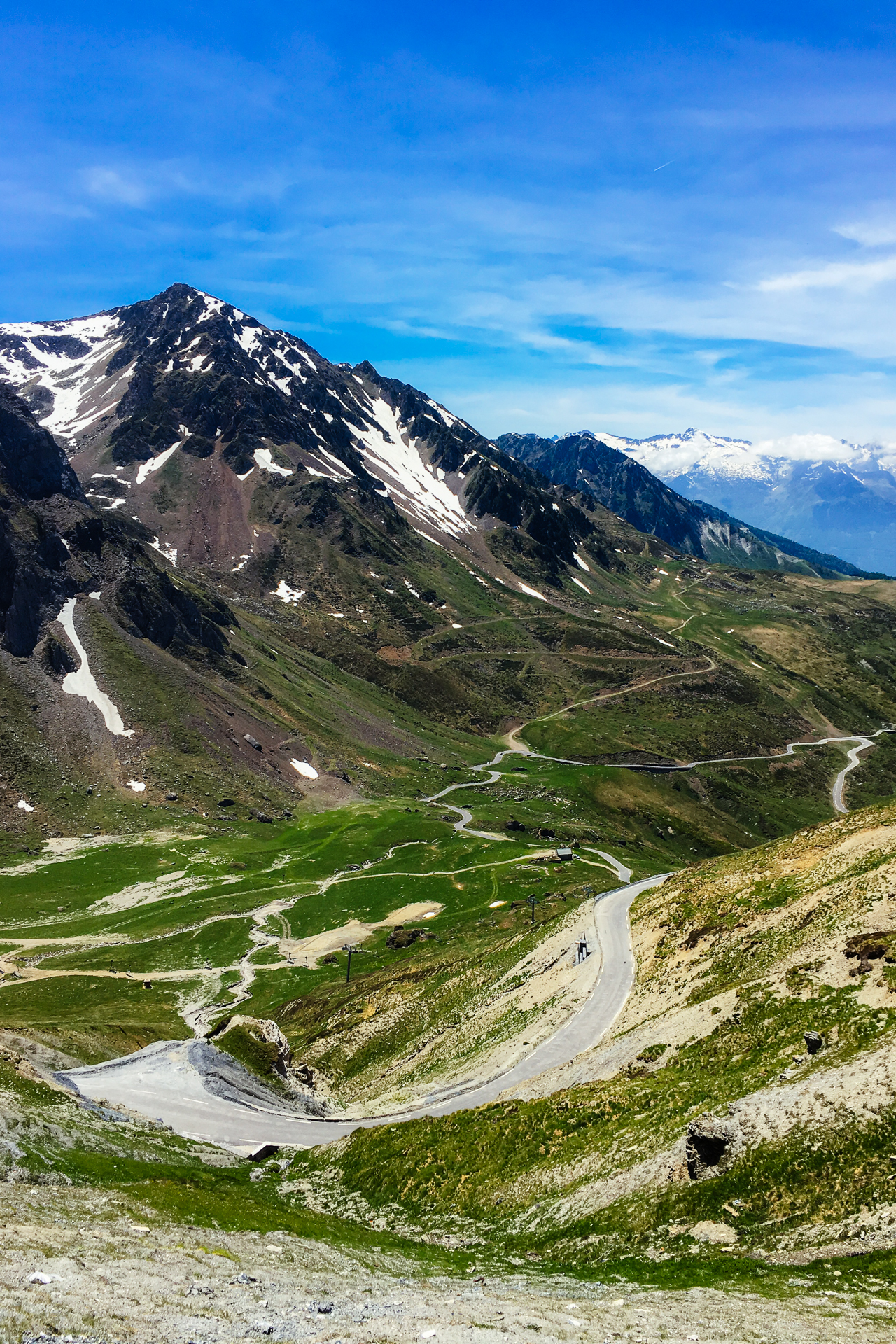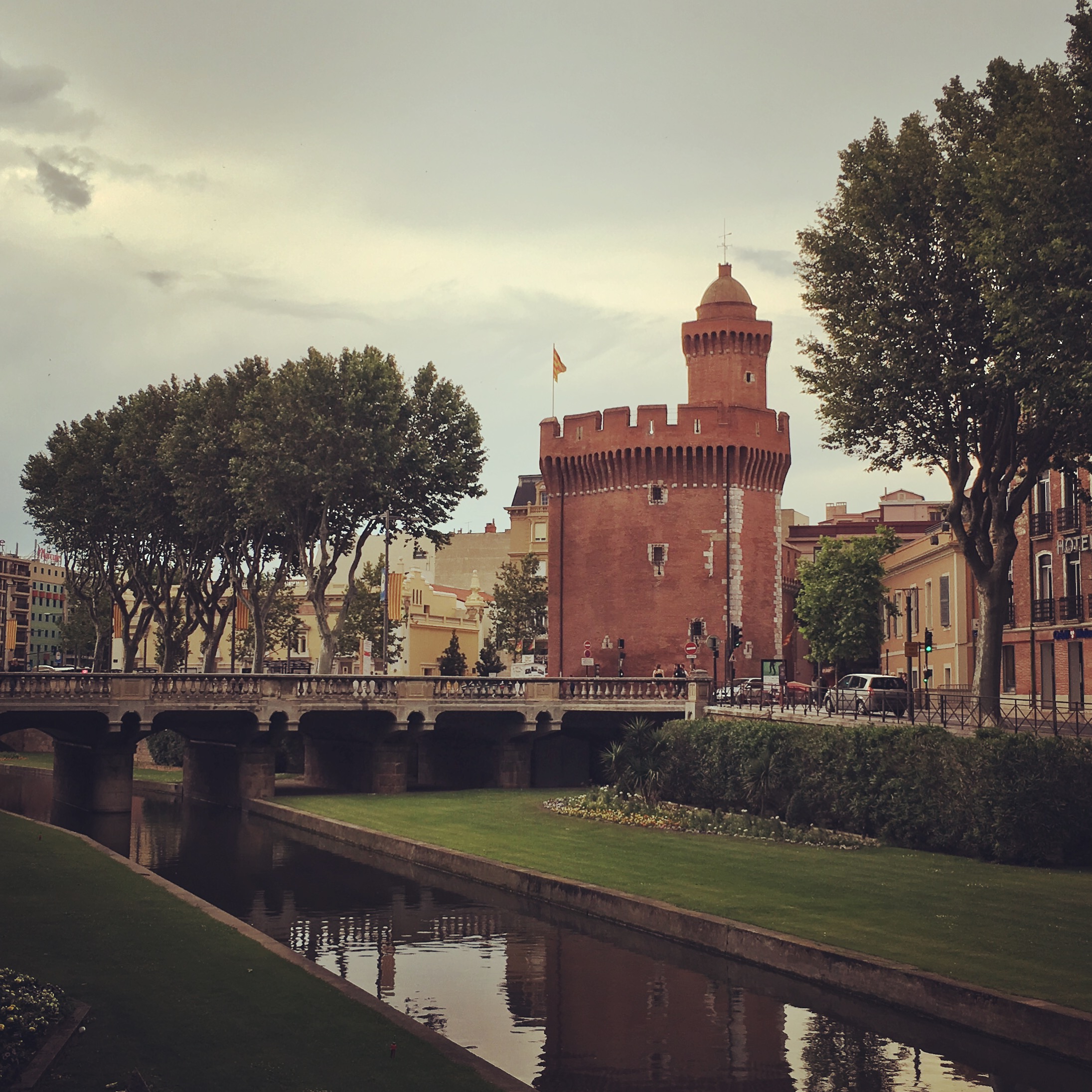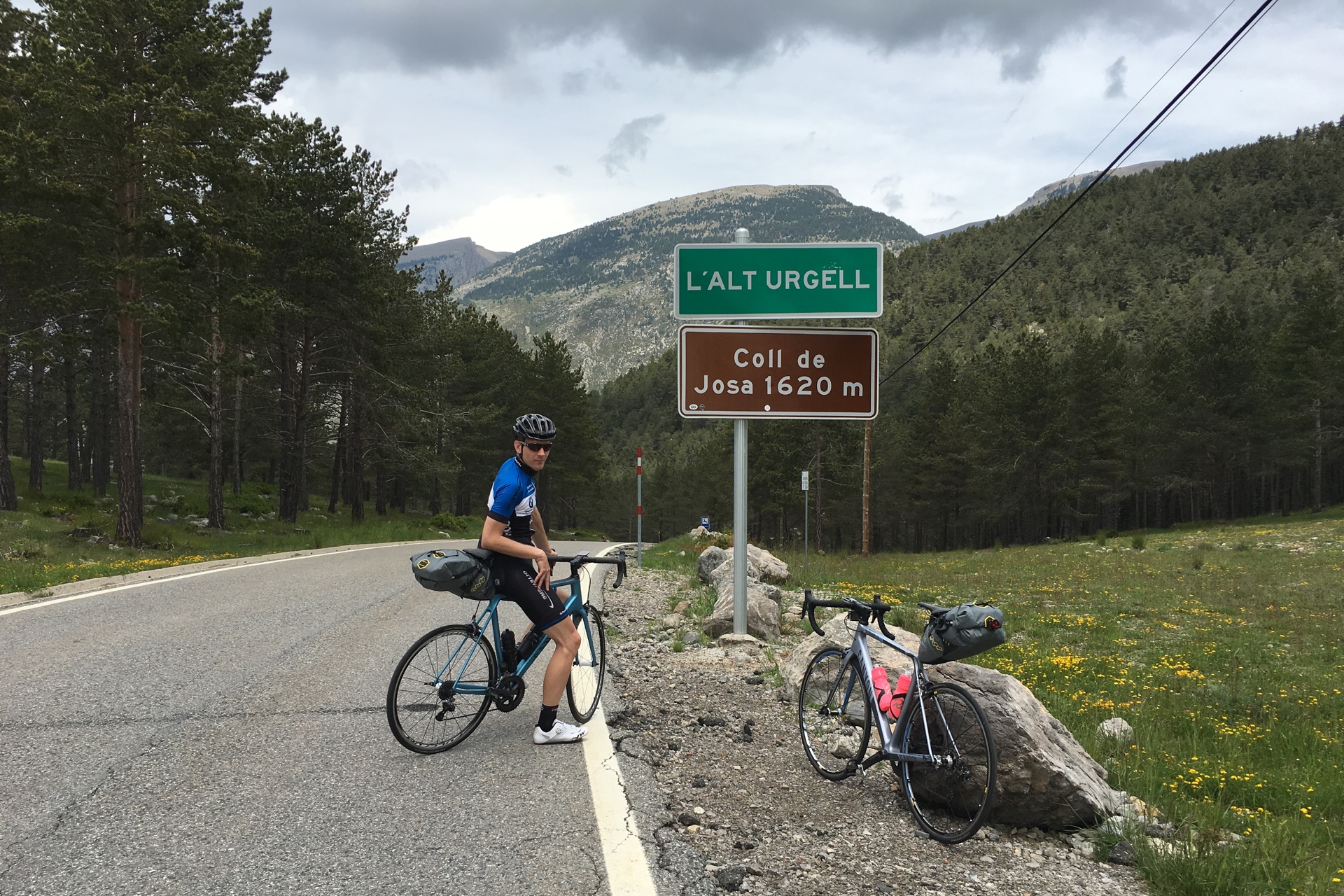So yes, as my most recent posts have already illustrated, I flew a lot, got my PPL(A) and my EASA Night Rating, and I took some pictures in Norway, but there were some other memorable events in the past year which should not stay undocumented. For people who still care about personal blogs. (I am really getting old…)
Continue readingTag Archives: travel
The past months
It is again the usual situation: I have not written anything here during the past months, but as always, this does not mean that I was not busy with various things basically all the time. So let’s have a short summary – in chronological order.
During November and December I played Uncharted 4 on the PS4, which looked very pretty, but progressed a bit slow for my liking, and the puzzles got quite repetitive after some time. For Christmas I got myself a new helmet (Giro Synthe MIPS) as a present, since my old one was getting way too old. Looks great, feels good. Then we spent two days between the holidays in Holland, visiting ‘s-Hertogenbosch and Nijmegen.
The first day we had sunny weather and Den Bosch was a nice city to walk around, while the next day Nijmegen was grey and cold, but at least we met up with Steven for dinner (and for lunch we also found a great place with delicious healthy sandwiches and drinks). On the next morning I also got the scrape-all-the-ice-off-your-windshield experience for the first time… Although we celebrated New Year’s Eve at home, the night before we went to the Spaans Dak for a fancy dinner, which was nice.
January was even colder than December. After cycling through the freezing fog in -5°C on the last day of the year (my coldest ride ever), I also biked through snow and freezing rain with my MTB during the first days of 2017 (this ride covered me in a layer of ice, and cost me a bit of skin around my left knee), and this kind of weather stayed for the following weeks too. This made January my coldest month on the bike (so far?) with an average ride temperature of 0.6°C (over 875 km in 34.5 hours).
I also got new glasses (my eyes did not get much worse, but my old lenses were so scratched from the years of cleaning that I really needed new ones), so now I have a slightly different look. Being a good citizen, I even went for a Belgian brand (Louis) for the frame. After all these expenses, I decided it was time to save some money, so instead of buying energy bars, I decided to make them myself. I used more or less the recipe from the Global Cycling Network, with some extra ingredients (and twice the amount to fill my baking tin), and the result was delicious. Since then I made a batch (almost 1.5 kg) every month. I also got a brighter front light (Lezyne Power Drive 1100XL) to be able to bike in the dark, therefore I had a few rides well past sunset for the first time ever. At the end of January I sold my MTB because I barely used it, especially since I got the cross bike. So now I have only two bikes again…
I started February with a small meeting in Bern at the International Space Science Institute, discussing the challenges in modelling massive stars. Unluckily around the same time I caught a quite bad cold, and I only recovered a week after coming home from Switzerland. (I felt so weak that I had to turn back from a group ride after 5 kilometres, which was pretty depressing after already not being on the bike for quite some time…). A week later (almost fully recovered by then) I went to the velodrome in Ghent with Willem (and the Belgian Rapha Cycling Club), which was a really fun two hours on the track with 40+ km/h. (Photo: Bert Van Lent – and I am on the far right.)
I wish there was a velodrome in Leuven, it would make my winter cycling training so much easier (and more fun). I had to buy a pair of new wheels for my road bike, because the originals were getting dangerously worn (partly due to the rainy and foggy descents in the Pyrenees last summer where we probably eroded a half millimetre from our rims in two days), and this time I did not go for the usual Mavic choice (although I am mostly happy with those wheels too), but I ordered a wheel-set from a smaller British company: HUNT. I choose their Race Aero wheels (1420g, 28 mm deep, and 22 mm wide rims, £379), and I am fully satisfied with them so far. They are hand built, light, aero, and HUNT offers a 60 day ride and return period, so I can only recommend giving them a try. Should I need a new pair of wheels, I find it likely that I would buy from HUNT again. Thanks to the wider rim, I also switched to a slightly wider tire (moving from 23 mm to 25 mm), and I can definitely feel the difference in ride quality (smoothness) and while cornering. The first ride with the new wheels took me to the French-Belgian border to do a reconnaissance of one of the routes that I had previously prepared for the Squadra Tornado training weekend. That week was great in terms of cycling overall (425 km in 15.5 hours), I even managed one ride in shorts (with knee and arm warmers, but still). Just before the end of the month I also completed the first century of the year too.
In March I started a big project that I always wanted to do; making my own sky atlas. The final push came when I was redoing a few figures about all the observations that had been made with the Mercator telescope since its inauguration (some of which I also compiled into a video), because I realised that I was already using a lot of the tools that would be needed to create a star atlas. Since this is a huge topic I want to write a separate blog entry about it (in the near future), but let me just say that I lost plenty of sleep time since the beginning of March to this project (but it has been always fun and I learned a lot while doing so). I was also a member of a PhD jury for the first time in my life, and I got to wear a fancy gown on the public defence of the candidate. I really liked that :)
For the second half of the month we finally got a spell of nice spring weather, so I returned to the South for the second reconnaissance ride, which was the nicest ride of the season so far (in Belgium). Unluckily the weather for the Tornado outing itself turned out to be pretty rainy, and I also had to drive to Antwerp in the middle of the weekend for an evening, therefore I only made it to the ride on Friday, so at the end I was really happy that I did the recon rides of the two other days earlier. On the PS4 I started playing Horizon Zero Dawn, which seems fun for now (although slightly repetitive). Towards the end of the month I bought a new cycling GPS, the Wahoo ELEMNT Bolt, which is much better than all the Garmins I had before, so I am very happy with the switch.
Unluckily it turns out that my unit has some kind of a hardware issue that only appears around an altitude of 2000 metres (and manifests in huge spikes or a complete loss in elevation data), so when I did my first bike ride from the Observatory on La Palma I had to face some nasty surprises. Of course – being a data scientist nerd – I was not happy about that, but luckily the Wahoo support was very helpful (maybe partly because I provided a detailed, ~5000 character-long description of the issue), and a replacement unit is already on its way as we speak (and as long as I am not crossing the ~2000 metre line I have no issues, so I don’t have to go back to one of my Garmin units in the meantime). Speaking of La Palma: I had an observing run at the Mercator telescope starting on the 4th of April (and lasting 9 nights, bringing my totals there up to 128 nights), then I took a week of holidays on the island just to bike around. The last time I travelled with my bike was in 2013, and most likely this is the last year that I have the opportunity to go to the Canary Islands for work, so I though I had to do it once again. During the nights I spent most of my time working on the sky atlas (drawing the outlines of ~300 dark and bright nebulae by hand) in the control room, and I did a 1.5-2 hour ride from the Observatory before every night (except for a very cold Monday). I have never biked this much up on the mountain. The previous years during the observing runs I only rode the bike between the telescope and the place where we stay during the day, which only added up to 10.5 km (when I rode up to the telescope twice) a day. Now I have a licence so I always drove the car to the telescope which saved a lot of time and energy, therefore I could go for longer rides between starting the instrument calibrations (right after getting out of bed on the afternoon) and having dinner (right before the beginning of the worknight). The weather was also quite nice at 2000 metres. It was almost always sunny, and during the first days it was even so hot that I could just bike in shorts, but a week into my stay I made good use of all the knee/arm warmers and the wind jacket I had with me too…
Normally I would take a taxi down to the hotel in Santa Cruz, but this time I made some arrangements so that I could just bike down, and a taxi would follow me with my bags :) That was quite cool (except for the part where a dog almost jumped at me while I was going down with 60 km/h), and I got an extremely helpful driver (via some local connections) who helped me with my bags a lot. I had six full days to bike, and I managed to bike on each day (which was a first again), although I had to cut a ride much shorter than planned, because I could not sleep anything the night before (thanks to my messed up internal clock). All in all I am happy with what I managed, especially the three longer rides. On the first day I biked around the Southern tip of the island before doing two 2nd category climbs, then after two days of fighting with insomnia I rode around the whole island (a really epic ride of 155 km with 3385 m of elevation gain), while on the last day of my holidays I biked up to the top of the island for the fifth time in my life, but for the first time without stopping.
This climb – leading up to the highest paved point (the Roque de los Muchachos at 2426 metres ASL) of the Canary Islands – is a monster. It is 41.5 km long, it starts at a few metres above sea level and climbs at an average gradient of 6%, but since there is a short downhill/flat section after reaching 2300 metres for the first time, the actual average gradient for the uphill parts is 7% (both for the first ~33 km and the last 3.5 km). Long story short, simply going up and down involves 2750 metres of elevation gain… This specific ride will stay in my memory not only because I finally managed to get up there without stopping, but also because the temperature went from 23°C at sea level to 10°C in the cloud layer (staying between 800 and 1800 metres, but while climbing that was not too cold, even though I was wearing only in shorts), then back up to comfortable (quite warm) levels thanks to the strong sunshine above the clouds.
This was all good until I had to go downhill though the cloud layer, because by that time the clouds became even thicker, so the visibility dropped to ~25 metres, and the temperature to 8°C. This means that I had to descend for a half hour through this layer (and due to the low visibility I had to go relatively slow, so it took me much longer than usual to get down), and I only had an extra gilet with me against the wind, but no jacket or arm warmers against the cold (since although I checked out what the weather situation was at the telescopes before leaving, I did not think about the possibility of having colder temperatures in the cloud layer at lower altitudes – quite stupid of me now that I think of it). With windchill values between 6°C and 2°C that was not a pleasant half hour, and I was shaking slightly by the time I emerged from the cloud layer, but I survived, so it is OK :D In total I biked 783 km in 34.5 hours on La Palma (with an elevation gain of 18140 metres, which explains the horrible average speed).
That afternoon (after warming up in the shower) I even managed to walk down to the new beach which finally opened after years of political games over permits and who knows what else, but now it is open, and it is a great addition to the city (providing not only access to the sea, but also a nice, new view over the colourful houses of the historical seafront with the mountains in the background). Speaking of things other than biking, just after cycling down from the observatory after my observing run, I got to watch two easter processions across the city, and they were both quite an interesting sight. My favourite italian place is luckily still open, so I ate there basically every night (except for one evening when I was so tired/lazy that I just stayed in my room and made spaghetti while watching Netflix). Although I am not a frequent coffee-drinker, I had to check out a place that I had read about in the Guardian a few months ago (El Cafe de Don Manuel). It turnes out that the article was not lying, it is a cosy, calm spot inside a beautiful renovated courtyard with only a few tables, and besides the good coffee, they serve delicious cakes too (one afternoon I simply could not resist taking a second piece, it was so good).
Flying home I got to sit on Business Class for the first time in my life (since for some reason when I booked my tickets to La Palma, this was the cheapest combination for these dates). It was a nice change to have legspace (and incredible amounts of it, especially from Madrid to Brussels) and proper meals, so I did not have to live on sandwiches and chocolates all day long. Of course if you think about it the price difference between business and economy tickets is basically more than what a (three) Michelin starred dinner costs (for two), so I would rather go for that and sit 5 hours without food and legspace if it was about my own hard-earned money. Ridiculous… (And then we are still not talking about First Class tickets on overseas trips.)
It was a bit of a shock to come back to the 7°C and rain, but hopefully from May the weather will finally turn a bit warmer. Besides work, I am also trying to put together a nice non-scientific CV for the corporate world, since soon I will start looking for a new job outside of academia, which will definitely bring some changes into my life.
Trans Pyrenees 2016 – The Ride (Part 3)
Stage 7: 97.4 km | 2250 m+
Dark clouds were looming low, covering the mountains starting from already a few hundred metres above us when we opened the curtains on Friday morning to check on the weather. Unluckily the forecast turned out to be right, but since we saw this coming already for a few days, we were more-or-less prepared mentally. At least the cloud layer prevented the air from cooling down during the night, so when we departed after breakfast, it was still 19°C. Before heading into the mountains, we rode by a local supermarket to fill our bottles with sports drink, and because a warm-up of 3 extra flat kilometres is always welcome. There we headed back to the centrum, and took the road up towards Arrens.
The menu for the day contained a 1st category double-climb leading up to the Col d’Aubisque (via the Col du Soulor) as the main dish, and a 2nd category climb to the Col de Marie-Blanque for dessert. The first three – 7% steep – kilometres brought us up to the start of a much more gradually ascending plateau that stretched all the way up to the foot of the Soulor. As usual by the time I reached this 9 km-long, slightly undulating section (average 2%), Willem was already gone. The plateau itself was nice; the road led through wide pastures which were covered with hay bales, bordered by forests growing on the steeper slopes on both sides.
We turned onto the first actual climb past the church in Arrens. The road and the scenery was similar to what we had already encountered on the Peyresourde and the Aspin; a narrow lane twisting upwards through grass fields with dashed white markings running along the edges, providing views only occasionally broken by a few trees. Unluckily we did not get to enjoy much of the panorama for long, as a few hundred metres above the foot of the climb we entered the cloud layer. Soon a light drizzle started, the road turned wet, and the visibility together with the temperature dropped quickly.
When I caught up with Willem on the top of the 7 km-long 8% section at the Col du Soulor at 1474 metres, it was only 9°C, and we could barely see further than 50 metres. It was not really raining, but the air was definitely saturated with water, so we had to put on our rain jackets after 6 dry days. We also put on our small flashing lights to make us more visible in the gloomy weather. It is a shame that we could not see anything, because based on the Internet the panorama must have been really beautiful from there, but I think this was not really our biggest concern right there. In any case, from there on we had no views for quite a long time.
The col was followed by 2 km of descending, which in the current weather conditions was painfully slow and filled with way too much braking, resulting in an average speed of 27 km/h on a -5% slope… Yeah, we really did not see anything. Soon the road turned flat then started climbing again. Steep rock walls stood high above us on our left, and similar depths opened up below to our right hand side. We could not tell how deep the void was, since the nearly vertical walls disappeared in the grey mist beyond 25 metres. After 4.5 gradually ascending kilometres and crossing a few short tunnels, the road got steeper again, and the remaining 3 km leading up to the Col d’Aubisque surprised us with an average gradient of 7.5%. To make things more memorable, the so far tolerable rain also got stronger, forcing me to put on even my watertight shoe-covers, and the wind started to blow.
The conditions on the top at an altitude of 1709 metres were as miserable as it gets: rain, 8°C, wind, and a visibility of 15 metres… It sucked, especially because we did not get to see anything from the view. (Google Col d’Aubisque, it is pretty.) I did not think about it there, but I should have put on my gilet under the rain jacket for some extra insulation, because the 18 km descent to Laruns in 10 degrees was the coldest I have felt on the bike since my first day in the Rocky Mountains in 2013 when I got caught in a thunderstorm which covered the road with a layer of ice at an altitude of 2800 metres (there the temperature plummeted to 5°C, even though it was 34°C on the plains, and 15°C nearing the top of the climb before the storm broke out). We were both very cold, but I think Willem suffered more, shivering due to the horrible wind-chill during the descent. I am sure he already regretted not putting his rainproof overshoes on. (I don’t know what was he thinking when he made that decision.)
It was so bad, that when we finally reached the bottom of the valley, we kept pushing hard even on the flats in order to warm up. That was one of the rare occasions when I did not want to stay in Willem’s slipstream at all. Luckily it was not raining anymore below the cloud layer, and the rain jackets themselves did their job perfectly earlier, so we were at least not too wet on top of everything. By the time we arrived to the foot of the next climb in Bielle after 8 basically flat kilometres, we were feeling much better again, and we could get rid of the jackets (as it was dry and 15°C).
The sign at the beginning of the climb stated that we would have to face 11.2 km at an average of 5.2%, but it was more complicated than that. It started with a 5 km long, steady 8% ascent leading up to a beautiful plateau, situated just metres below the swirling cloud layer, and surrounded by modest peaks covered in lush forests. A large flock of sheep just got off the road when I got up there. For the next two kilometres the road did not reach a much higher ground as it crossed the pastures, but it climbed just enough to disappear into the cloud layer as soon as the next steep section started where it entered the forest. At the same time rain began to fall again, so I put on both my gilet and my rain jacket (leaving the latter open for the climb), knowing that it would most likely only get colder and wetter towards the col.
Despite the conditions, there were quite a lot of other cyclists on the mountain, mostly riding in the opposite direction. The first kilometre in the forest was a steep 9% climb, then the road levelled out and stayed flat for the following two. The last sign (showing the elevation, remaining distance, and the gradient for the coming section) before the top displayed such a ridiculous percentage (something like 18% if I remember correctly), that I had to let a few juicy Hungarian swear-words go out loud. Luckily, the value was totally incorrect, the reality was definitely something single digit.
When I finally reached the Col de Marie-Blanque at an altitude of 1035 metres, it was completely deserted. Rain was pouring down almost silently, and I could see thicker and thinner cloud layers slowly floating across the road. I was not surprised that Willem was not waiting for me there. In a sense it was very special, being there alone in the quiet, listening to nothing but the rain drops, watching the surroundings quickly disappear in the grey mist beyond a hundred metres. The descent to Escot was wet, but literally straightforward. Willem was waiting there, refuelling under a small roofed shelter, standing just next to the information sign describing the climb to the Marie-Blanque.
I also ate one of the few real energy bars from the small PowerBar collection that I had brought along specifically for hard moments where normal snacks just would not be enough. We still had around 15 kilometres to go, but the road we were supposed to take had been clearly just resurfaced, as the fresh dark layer of asphalt was almost fuming in the rain. After a manual temperature-check (a.k.a. touching the ground) we decided that we would try to ride over it anyway. After the first bend it became clear that this was not going to work after all, because not only got the asphalt noticeably warmer, but the road a few hundred metres further was blocked by heavy vehicles and a team of workers laying down the fresh, hot surface. There was no other option than turning back and taking the road on that side of the valley, which meant a bit of extra up-and-down and 3 additional wet kilometres, which non of us was really missing from the day.
We were pedalling relentlessly towards the finish, with water seemingly coming from everywhere. The last small hill (surprising us with an actual mini-serpentine) before rolling into Arette was slightly demoralising, but we were both very glad when we finally arrived to the hotel. After getting the keys to our room we put away our bikes in the office of the owner (who had his own electric MTB there), and got busy with our post-ride checklist, which contained a bit more shoe-drying than usual – especially for Willem. Our saddle bags survived the rain with only minor water damage, but since all our clothes and electronics were in an extra protective plastic bag inside, everything came out perfectly dry.
Afterwards we cleaned the bikes a bit in the garden with a hose, and even put on fresh chain oil (so carrying a tube of it over the previous cols finally payed off). We could already tell by running our finger along the edge of our rims, that the fog-enforced prolonged braking down the Aubisque ate away a noticeable amount of the material. Since it was still early in the afternoon for a proper meal, we ran across (as it was still raining) to the grocery store to already buy the drinks for the next day, and to get some chips and chocolate to survive the rest of the evening. Then we got dinner in the only available local tavern, which had a surprisingly nicely decorated restaurant area, serving very simple, but large, filling local dishes.
It was also the evening of the opening game of the UEFA Euro 2016, but the signal on our TV kept dropping out, so we did not see the French win. We were more busy checking the weather forecast and the radar picture, pondering about the chances of getting soaked during the queen stage the next day. We analysed the profile of the next étape every evening, but that was the first time that I was a bit anxious. I told Willem that we would just wait and see how things turn out on the next morning, but I was quite worried that if the weather does not improve then we might have to skip climbing over to the Spanish side and take a shortcut staying at a lower altitude in France. It was unlikely, but I like to be prepared for everything… In any case, it was still raining when we fell asleep.
Stage 8: 133.8 km | 3500 m+
Our wildest dreams became reality on Saturday morning; not only was it not raining anymore, but patches of blue sky were visible between the clouds, and even the sun made it through one of these encouraging gaps. We were back in business as my bad thoughts about a shortened stage immediately vanished while catching the first glimpse of the much-improved conditions. The legs were also feeling OK, especially considering that we were on the road for 7 days without so much as thinking of a rest-day.
Being optimistic was definitely necessary, because it was the queen stage of our Trans Pyrenees ride waiting for us that day, with the following series of climbs: a HC, a 3rd, a 1st, a 1st, and a 3rd category ascent… The elevation profile and the raw stats foreshadowed a stage that would have been tough enough even as a separate one-day grand fondo event, but we had to tackle it after a week of riding through the mountains. We got going with these thoughts after a relaxed breakfast. The weather was perfect (18°C, no wind) and the roads down in the village were already dry.
The first col of the day was our second and last hors catégorie climb (after the Tourmalet): 25 km at an average of 5.6%. The first 8 kilometres were easy at ~2%, first crossing the fields around Arette, then passing through a few narrow gaps between the surrounding steep slopes leading into the valley that we would follow later on. Here we could still ride casually next to each other and chat while spinning at an optimal RPM. We passed the first elevation/distance/gradient marker 19 km from the top, still showing only an easy 3% till the next sign. The road already entered the forest by then, but for a few kilometres the steep slopes to the left stayed free of trees, but instead they were covered with a dense layer of dark green grass that was wet from the morning dew, shining in the low sun, and broken only by a few lonely rock formations balancing over the valley.
Then it suddenly became steeper – 10 km followed at an average of 9% -, and as usual, the distance between me and Willem started to grow. I still managed to catch up with him 5 minutes into this section because a large group of cows was being herded up taking the whole width of the road, and it took a bit of work from the herders to let us through. Even with the push we got from a friendly farmer, I could not stick with Willem for too long, and I lost sight of him soon afterwards as we reached the first real hairpins. As we climbed, the clouds above us got thicker again, and the humidity rose noticeably. Upon entering the pine forest at an altitude of around 1000 metres, the air also started to cool down, so when I reached the end of the steep section a good 350 metres higher (in 10°C), I stopped for a few minutes to put some extra clothes on (arm warmers and a gilet).
The next 3 kilometres surprised me with an easy 4%, even including a short downhill section through a low-hanging cloud-layer, and some very different scenery. The road curved across a wider, grass-covered area first, then waved further up around small rock-islands that stood a few metres tall on both sides, serving as elevated platforms for the pines that were growing on them. When the trees disappeared later on, these grey stone-formations got more prominent, and without the protection of the vegetation, their surfaces and edges became much smoother from erosion. Here two more steep sections followed; 1.5 km at 8% climbing through the outskirts of the ski-village, and – after a small downhill – another 1 km at 8% twisting higher through the grass and stone covered slopes (and even a few patches of snow here-and-there).
The last two hairpins were very painful after almost two hours of climbing, but then the final few hundred metres were much more gradual, and I could see Willem from far already before rolling through the imaginary finish line at the Col de la Pierre St Martin at an altitude of 1766 metres (a good 10 minutes after him). We were happy to be on the top, since that meant that a significant percentage of the day’s elevation gain was completed, the longest climb was done, and most importantly, we were still dry. As it was only 8°C on the col, we had to put on our jackets there.
We started the descent into Spain immediately after taking a few pictures, hoping to get out of the cold as soon as possible. There were more pine trees growing on the otherwise thin patches of soil on the grey, rocky Southern slopes. The first three kilometres of the descent twisted across this landscape, including even a 270° turn where the road curved around and passed under itself. This was followed by another 3 km of basically flat section, leaving the narrow stone-walls behind arriving to a broad, grass-covered ridge running along the border. We had to stop here for a few pictures, because we reached the edge of the cloud layer, and a full 360° panorama opened up around us. We could see the last peaks reaching above 2000 metres in the Pyrenees to the West, and the blue skies above Spain to the South.
The next 8 km descended at an average -7%, and it was probably the most mentally recharging part of the day, if not of the whole journey. It was finally sunny, the road was broad, the surface was smooth, the traffic was non-existent, and we were flying down effortlessly at speeds above 70 km/h in the straight sections. In the middle of this section a serpentine got us down from the grasslands into the forest through 7 hairpin corners. The colours were amazing; the deep blue of the sky, the green of the grass, the yellow patches of the blossoming bushes, and the dissolving white clouds provided a photo-perfect background. Suddenly life seemed so much easier, and the queen stage much less worrying.
At 1000 metres the road left the steep section reaching the broad grassy basin of the valley below, which is most likely the byproduct of a glacier that covered the slopes to the East thousands of years ago, and was later on filled up and flattened by the receding ice sheet. There is still a fast-flowing mountain-stream that remains, probably shaping the basin year-by-year a little further. For the coming 12 kilometres we followed the narrowing valley on a moderate -1.5% slope, which continued in a narrow gorge through the forest later on, before reaching the lovely village of Isaba.
Our actual route would turn right just before entering the town, but we decided to make a short detour to get something to eat and drink. The last few metres were pretty steep, but luckily we managed to find a bar that was open and where they even served some food. I got two small sandwiches, while Willem got a small portion of patatas bravas. When we decided to continue the sky was cloudless, and the temperature rose to almost thirty degrees, so our vests and jackets got packed away. A very quiet road led us towards the Northwest through a small valley, surrounded by a mixed forest, but it was quite boring compared to what we had seen earlier that day.
After 9 km at 2%, a 2 km-long 7% ramp took us over the small pass of Laza at an altitude of 1129 metres. We immediately rode further (after a short pee-break), descending to a bit below 900 metres in 3.5 kilometres. There were some nice views from here, looking up towards the North and the Northeast, where we could see a thick layer of clouds flowing over the mountain range from the French side, and dissolving while rolling down above the Southern slopes. Although it was really beautiful, it also warned us that the weather over the border was still less hot and sunny. Of course that was exactly the direction we were heading to.
As soon as we reached the road below, the descent turned into ascent; the next 10.3 kilometres followed at an almost constant 6.5% towards France. It was nice to climb at a steady pace, and the landscape was also pleasant. During the first third the road was twisting through a not too dense forest which was frequently interrupted by patches of grassy meadows that provided great views to the cloud-waterfall to the North. Then two kilometres of forest followed, where we realised that there was an actual grand fondo happening in the opposite direction (called the Irati Xtrem) as riders escorted by safety-motorbikes flew by clearly racing down the mountain.
We passed the tree-line at 1300 metres. From there the road climbed steadily and generally straight North, not far below a North-South oriented grassy ridge. There were a few vultures circling above to our left, probably staring at the few weak-looking (but simply freshly-shaved) sheep lying at the side of the road, and a large chunk of dark cloud flowing down the mountain from the right, just in front of us. The view was magnificent, up until we passed the last hairpin, when everything vanished in the grey haze a kilometre from the top. A hundred metres further I had to stop for a few seconds, because the road was just about to disappear in a dark, cloud-filled tunnel, so I really had to put on my lights for safety. By the time I reached the Port de Larrau at 1578 metres, the visibility dropped to basically 10 metres, thick drizzle started to fall, and the temperature was also plummeting towards the single digits (reaching 7°C a few minutes later).
I stopped at the side of the road to put on all my warm clothes, but I had to fight a bit for my jacket against the strong wind. In the meantime more and more participants of the Irati Xtrem were reaching the top (which was the end of a timed section) from the other side. Despite the challenging conditions, there were a lot of supporters out on the mountain, cheering loud for every rider. This large turnout was very nice, but made the 14 km-long descent to France slightly more annoying than it should have been. First of all, the visibility was already so low (even worse than the previous day down the Aubisque), that I could not let the brakes go during the first half until reaching the cloud-base (further eroding my poor rims), but with the huge traffic of cyclists coming up against me, often taking the full width of the road, I had to shout out a few times to make them realise that it was not a one-way road after all. Then when I could finally see further than my front wheel – upon reaching the lower half – I still could not enjoy flying through the consecutive hairpins much because there was simply not enough space on the road. It is a pity, because the road was very nice and technical, and the view was also pretty over the green mountains of the Basque country.
Willem was waiting for me in Larrau, also slightly pissed about the traffic jam we had to endure earlier. We had to descend another 2 km from there until reaching the bottom at around 500 metres, where we stopped for a few minutes before jumping onto the next climb. And OMG what a climb that was… 10 km at an average of 8%, but including a 5 kilometre-long section at 12% ending only a few hundred metres before reaching the top. It was simply brutal; there were hairpins where I could barely push through, we had to stop for 15 minutes 1.5 km into the steep section because an ambulance-operation was blocking the road above, and on top of everything it was also raining. Not the drizzle we had on the previous peak, but proper rain. I had to stand out of the saddle much more than I normally prefer to, and both my speed and average cadence were in the miserable region. Each 100 metre seemed to take forever. I suffered so much that it was not fun anymore.
When I finally reached the top, the only positive thing I could think about was giving the middle finger to the Col de Bagargi (1327 m) sign. That was at least funny :) Willem was already busy putting his water-tight overshoes on sitting on the covered terrace of a small wooden house when I arrived, but he was also clearly getting tired. He did not say it, but I could tell from the lack of smiling or joking. The descent started in 6°C. It was extremely wet and slippery, so we had to take each of the hairpin curves very carefully. For the last kilometres we got under the cloud layer again, thus we could enjoy the view of the lush green hills for a short while. But the dry weather and the good visibility did not last long, because after 6.5 km, the road turned uphill again, climbing back into the rainclouds. I was totally dead here, with no remaining energy to push at all. Rain-curtains were moving across the 2 km-long 6% ascent, and we crossed the Col de Burdincurucheta at 1135 metres in miserable conditions.
We did not stay long. The following descent started with a series of hairpin curves, then continued along the ridge to the Northwest. Somewhere here we left the cloud layer for good, and since the road was miraculously pretty dry, we could finally do some high-speed descending looking over the green Basque landscape. 9 kilometres below the last col, we reached the bottom of the valley (at an altitude of 330 m) after passing through a second series of narrow turns in the forest leading down from the grassy ridge, and surviving an uncomfortably-close encounter with a few cows.
The last 15 kilometres stayed more or less level (-1%). We passed a series of villages with unpronounceable names, then left the main road for a final roller-coaster (which was much nicer than the big road, but the extra unexpected short climbs did not make us happy at this point) before a short descend landed us in front of our hotel in Saint-Jean-Pied-de-Port.
That was a huge moment for both of us. We survived the queen stage, the last hard day before the finish. It was a truly epic ride, and we were strong enough even after seven days in the saddle to handle it. We knew that the following day we would reach the finish for sure. We must have felt the same way as the pros feel after 20 stages on the Tour de France, knowing that now they will surely make it to the Champs-Élysées. We were tired – even Willem (maybe for the first time) -, but very happy. We checked in, put away our bikes in a comfortingly safe-looking storage area, then occupied our room feeling all-triumphant. It was definitely the nicest hotel we had in France, and we appreciated the comfort very much after such a hard day.
After going through our post-ride rituals we immediately went for food. The city was very pretty, every house is painted white and (brownish) red, which gives a clean, organised look to the streets.
We checked out quite a few restaurants before sitting down at a nice terrace just next to our hotel, which even had the evening’s football game on display. We spent so much time on the road (8 hours and 15 minutes with stops included), that this was the very first evening when we did not have to wait for the restaurants to open. It was very nice sitting there, having good food, knowing that there is only one more day to go, and not having to worry about anything while enjoying the evening sunshine. As usual, falling asleep was not an issue later on.
Stage 9: 88.7 km | 1341 m+
Sunday morning dawned at us under cloudy skies, but with no chance of rain for the day. Our bikes were still dirty from the ordeals of the previous stage, but we could not care less anymore. The rims lost again a noticeable amount of material from the prolonged breaking, but everything seemed to be still well within the safety-limits. The chains were still running smooth thanks to the hydrophobic (crazy-ass expensive) chain-oil that I carried over the Pyrenees, and the rest did not matter as long as everything was quiet. Even though the day would be easier, there were still two climbs that had to be done, and we were supposed to pick up the rental car at four on the afternoon, so we left not much after ten.
We passed by the supermarket to fill up our bidons with sport drinks for the last time, then set off to the West. The first 12 km crossed the Basque countryside generally level, containing only a small hill-climb before rolling into Saint-Étienne-de-Baïgorry. In the centrum of the scenic red-white-green-coloured town we took a right turn to start our last 2nd category climb. Willem decided to take it easy on the last day and he stayed with me during the whole 7.5 km-long ascent (at and average 6.5%). It was a nice narrow road climbing higher-and-higher around at least five small, grass-covered ridges, twisting slowly from one side to the other. My legs were not very fresh, but the steady gradient was very much to my liking. It took us a bit more than a half hour to reach the Col d’Ispeguy at an altitude of 672 metres.
The view was nice, although the overcast sky turned the otherwise vivid shades of green a little pale. The downhill into Spain was much longer than the climb (12 km), and started on a narrow, steep serpentine containing ten hairpins, after which it straightened out and continued more gradually. Then we turned North on a larger road, and started the last categorised climb (a 3rd category one) of the Pyrenees. Most of the 7.5 km-long ascent lead between trees that blocked the view, and despite the easy 4.3% average gradient, I kept dropping behind Willem. Although the official elevation of the Col d’Otxondo is 602 metres, we reached the col-sign at 570 metres, and a post-Pyrenees internet search showed that the latter is indeed the correct value. We saw two other guys here riding in the opposite direction with the same saddle bags, and immediately thought that they must be doing a similar ride to us. (Based on another post-Pyrenees internet-investigation, this was also correct.) Just like at the first real col, we have taken a picture with the col-sign here too.
Looking at the two photographs, we are as happy on the second one as on the first, but with a bit more facial hair :D The Atlantic Ocean was already visible in the distance from the descent, but Willem was more busy going down Froome-style than looking around, so he missed the view. 10 km later we crossed back into France. The landscape has changed a lot, we left the mountains behind, and we were pedalling through a countryside that could have easily been somewhere in Belgium too. Willem was pushing quite a good pace – we were going well over 30 km/h on the flats – while I was chilling/surviving in his slipstream.
Another ten kilometres later we had to climb back a bit (1.1 km at 6%) before pushing through a mix of fields, meadows, and small forests over a slightly undulating secondary road (trying to drop a local cyclists) before reaching the first houses of our final destination a good 16 km further. I would have taken this section a bit slower, but my crazy travel-buddy thought there was nothing better than a bit of power-training after 8.5 days in the Pyrenees… :D The following 6 kilometres led deep into and across the fancy centre of Biarritz, where we passed an uncountable number of hotels, casinos, and small castles – or big villas – before reaching the lighthouse overlooking the bay. There lied the virtual finish line of our Trans Pyrenees ride, so we stopped for a while to appreciate the view and what we had just achieved.
We celebrated with a last fist-bump, a recurring element that was introduced by Willem at the end of the first stage. Then we decided that we would first bike to the Airport (which was another 5 km further) to pick up the rental car, and get something for lunch only afterwards. That was a first in my life, arriving to the terminal by bike and walking in wearing cycling shoes, but nobody seemed to be bothered by our sight (or smell).
We changed into normal clothes in the toilet, then got the keys of a much bigger car than what we expected, so loading the bikes in was a surprisingly easy task. On the other hand, it was an automatic car, and Willem needed a bit of explanation about driving without the stick. In the beginning he wanted to shift all the time, and when the leftmost pedal is not the clutch but the brake, then pushing it while going fast is not the best idea. So I had to hit him a few times when he removed his right hand from the wheel :D
The highway passed pretty close to the Pyrenees for quite a long time before turning up towards Toulouse, so we could still say goodbye. The mountain range seemed magnificent, rising as a massive wall behind the plains to the South.
This sight made us appreciate the magnitude of our accomplishments of the past nine days even more. A good 300 km (and only one accidental braking as Willem attempted to shift down while driving off the highway) later we arrived to the Airport of Toulouse, where we dropped off the rental car. Then we biked to the hotel where we left our car 10 days earlier. Navigating there without our Garmins was not so straightforward, but thanks to Google Maps we managed.
We immediately packed the bikes in neatly to be fully ready for the homeward journey the next day, then drove over to another hotel where we would spend the night. (Yes, it was much cheaper to book two different hotels in Toulouse for the first and last night, than taking the same one.) After check-in, we got some asian food in the centre, and unlike the previous evenings, even I had some wine. Or maybe that was already after the queen stage, I don’t remember anymore. We might have watched some football before falling asleep, but non of us payed much attention.
The next morning we made it to breakfast as early as possible, then drove home with the cruise control set to the maximum allowed speed. We stopped only twice to grab some food (because I love shopping at gas stations), and had a pretty uneventful journey, except for a bit of traffic through Paris, and almost running out of fuel half an hour from home. But we made it after all, and in no time I was already half asleep lying across our couch.
These days in France and Spain were definitely one of the coolest things I have done in my life. I am very glad that Willem was crazy enough to come along, because I would not wanted to do this alone. Transcontinental Race next? :D
Trans Pyrenees 2016 – The Ride (Part 2)
Stage 4: 124.7 km | 2611 m+
The morning of the fourth day (7th of June, Tuesday) started grey and misty, but I quickly calmed Willem’s nerves by showing him the satellite picture and explaining that what we see is just local low-level fog, which would dissolve by the time we leave after breakfast. There were a lot of athletes staying in our hotel preparing for the canoe slalom world cup that was held on the following weekend, so while we were carrying our bikes down they were tackling the same narrow turns through the staircase (or the elevator) with their paddles. This was the first time that we had breakfast in the hotel, but we would stick to that from then on, simply because it took less effort than looking for food on the morning.
By the time we left the last patches of fog gave way for the sun, but it was still only a chilly 12 degrees when we rolled out of La Seu d’Urgell. The air was fresh, and extremely clean, thus the sky appeared deep blue above us. During the first nine kilometres we followed a narrow car-free path along the el Segre river, and we could watch from the bottom of the walley as the clouds that were born from the morning mist were climbing higher and higher up the surrounding slopes, before they dried up and disappeared at a given altitude. Then we had to go and try to catch up with them. After a short section on the shoulder of a busier road, we turned right to the Northwest, and started the 1st category climb towards the pass of el Canto, that was waiting for us at a distance of more-or-less 25 kilometres.
The slope started with a brutal suddenness, the first six kilometres had an average of a bit above 8%, but this included sustained sections over 10% too. Even though the air temperature stayed almost constant around 15 degrees, I was feeling extremely hot even with an open jersey, and drops of sweat were pouring down my arms and legs. This was the first time that I started thinking “how are we going to survive this, we are not even halfway through and I am dying here…”, and then I quickly decided that I will just take the remaining days “one climb at a time”. That seemed to be a good mental setting, which worked pretty well from then on. I felt a bit sad first that Willem was doing quite a lot better than me, but then I reminded myself that this is not a race and we are here to enjoy the journey.
Speaking about that, the view was pretty amazing looking back towards the valley and the mountains behind that we had conquered already the day before. The scenery to the front was not so special, the mountains were not tall or young enough to be rocky, all the slopes and ridges were still covered with pine forests, with some occasional bushes that were blooming with yellow flowers in between. We had to stop once for road works (as the Tour de France was passing there a few weeks later the surface had to be fixed here and there), but besides that, the climb was pretty uneventful. After the first steep section ended there was an 8 kilometre long stretch that was barely going uphill (with even two short descents to piss me off by loosing some hard-earned metres from our altitude), which provided some time to recharge both the mental and physical batteries, so by the time the next really ascending section arrived, I was feeling much better.
It was 3.5 km at an average of 7%, monotonously climbing higher and higher through the pine forest, and as the air thickened, the rays of the Sun became more powerful, which was very noticeable on the roads that were shaded from the wind by the surrounding trees. This was followed by a long, nearly straight and almost flat stretch of road (at 1%, it felt basically downhill), before the last uphill section arrived that still averaged 4.5% for 2.5 km while it took us to the top to an altitude of 1720 metres. Willem – as usual – was already sunbathing at one of the picnic tables by the time I have arrived. I was feeling pretty good here, the bad thoughts of the firt steep section were long left behind. I almost managed to throw my banana peels into a garbage bin from 50 metres, but at the end I missed by a few centimetres, which meant that a had to do the silly walk (because when bikers walk in their cycling shoes that is everything but elegant) through the grass to the bin and back… That was a fun break.
Soon enough we started our 20 kilometre-long descent towards Sort. We could see patches of snow to the Northwest again, while leaving the pines behind quickly as we dipped deep into the zone of deciduous vegetation. This was also the place where I started suspecting that my GoPro camera is interfering with my Garmin GPS, because as soon as I started a recording, my GPS suddenly lost the ability to track the sudden changes in direction fast enough (which is definitely a bad thing on a serpentine), but it went back to normal immediately as soon as I stopped the GoPro. So from there on I tried to avoid making extended clips on long winding descents. It is stupid, but 100% real, I even found videos on YouTube about this issue afterwards.
When we finally arrived to Sort, we decided to take a proper lunch-break. I had a burger and some of Willem’s patatas bravas. Since we still had 70 km to go and another 1st category peak (that was almost categorised as HC) to climb, we did not waste too much time, so we payed and got back on our bikes pretty quickly. The following 30 kilometers were hot; a 28 degree-warm tail wind helped us pedalling Northwards in the valley of the Noguera Pallaresa river. The smooth road curved up and down, wedged in between the surrounding, rocky walls, that were too steep to support trees, therefore only bushes managed to climb their faces. While on average we were ascending at an average of 1%, it was much more a succession of short climbs and shorter descents, crossing the river a few times in the meantime. Halfway through the heatwave of the valley we stopped for a few minutes on a small bridge just off the main road to cool down in the shade (and enjoying the cold air coming from the water below) and take a few scenic pictures with the wild river in the background.
Maybe as a side-effect of the heat, but this section felt much longer than expected, and I was really looking forward to the cool air of the next col. But first we still had to pass a larger lake, then as the valley broadened towards Esterri d’Àneu we were welcomed by great views towards the taller, snowy peaks once again.
The 18 km long climb started there, hugging the left side of the valley, with painfully steep gradients around 8% over the first 3 kilometres, well beyond the foreseen average of 6%. That section was pretty painful, but the view got better and better as we climbed. For a short time the road narrowed to a single lane to make it through a narrower passage, and the steepness also became more pleasant for a while. Soon green-white coloured snow poles appeared along the side of the road (helping the snow plowers find their way in deep snow, as this road is kept open during winter to give access to a busy ski-area that is situated on top), and the surrounding forest was gradually left behind as we made it to the altitude of flowering yellow bushes, grassy fields, and barren stone-covered slopes. At the beginning of this area there were a lot of annoying flies (and our limited speed meant that we would not just fly past them), but luckily the air was too thin or too cold for them to follow us higher.
The second half of the climb was at a relatively steady 6%, passing more than twenty hairpins (most of which very broad and relaxed, Willem even complained that they were excessive and uncalled for), before reaching the last stretch of straight road that lead to the col signs placed at an altitude of 2072 metres. The panorama was truly magnificent during the last half of the climb; thanks to the winding road we had plenty of opportunities to enjoy the view to every possible direction. It was the first really high mountain pass of our trip, where there was no more vegetation left around us, only grass, rock and patches of snow. It was still 16 degrees Celsius on the top, which was not so surprising since we started the climb in 30 degrees at a 1000 metres lower altitude. I arrived to the top exhausted, I did not eat or drink enough during the last hour, so I was very happy that Willem still had a half banana for me.
As soon as I managed to pump enough calories in and started to feel better, we took off for the descent. Even though it was warm, the first few kilometres felt very cold, but again, the views were amazing, especially back towards the snowy ranges to the South. The road down on this side of the col was almost perfectly straight, except for six hairpins, so the rest of the day was quite straightforward. Literally. After 22 kilometres of doing nothing, we arrived to the outskirts of Vielha, where a more-or-less empty, huge, ski-resort hotel was waiting for us.
The funny thing is that if you look up this place in Google Street View (and make sure you are looking at the July 2012 imagery), then the team bus of Garmin-Sharp (a cycling team) is visible just in front of the entrance, so I knew we would not be the first people staying there with bikes. And still, this was the first night when we were not allowed to take our bikes with us to our room. I was pretty pissed about that, and now I feel a bit bad about all the complaints and demands I was throwing at the receptionist lady, but you need to understand that I was very tired, and I could not get the stories I had read about bikes that were stolen from storage rooms in hotels during large cycling events out of my head. Moreover, this was the very first time that I was not allowed to take my bike to my room ever. So at the end, we had to put our bikes to an empty ski-storage room (displaying a sign saying that the hotel is not responsible for any valuables left in there…), but I was so tired that after 15 minutes I could not care less anymore, and I just wanted to get a shower and go for food.
After our usual post-ride ritual, we first had a look at the menu of the hotel itself, but that was not at all compatible with Willem’s dietary restrictions, so we headed down to the centre of the village. It did not take much walking around before we settled on a terrace overlooking the old square just below the church, where the choice seemed to be plentiful and the prices were – as everywhere in Spain – ridiculously low. I took a bruschetta with tomatoes as a starter which was not so amazing, but then I ordered the special burger of the chef. Now that was mind-blowing.
It was a double burger in a ciabatta bread, which means that it was basically two full burgers next to each other (the plate underneath was not wide enough to hold it), and it had the two pieces of burger meat, two full sunny side up eggs, bacon, onions, cheese slices, and some salad inside. It was so enormous that when I ordered the waiter specifically warned me that it is going to be really big, but non of us expected it to be that big. Anyway, when he brought it out everybody around us started to ask for the same. It was so well hidden on a menu consisting of more than hundred options, that nobody knew this actually existed before I started eating it. Long story short, I almost managed to finish it, but with around a quarter or fifth left I had to give up. Maybe without that lacklustre bruschetta I would have been able to eat it all, but we will never know. I don’t really remember anything else from the rest of the evening, but I know that walking back to the hotel (and up the stairs) was not an easy task anymore.
Stage 5: 82.4 km | 2143 m+
Thanks to a good night’s sleep and the calorie-bomb burger the evening before, I woke up feeling pretty good on Wednesday morning (8th of June), especially sine I knew that the next three days would be relatively shorter compared to the previous three longer stages. The weather was still perfect, with no cloud on the sky, 17 degrees, and the first 16 km of the day waiting for us with a pleasant 2% downhill. After breakfast we filled up our bottles with the usual sports drink that we bought at the local supermarket, then not much after 10 we were already on our way. The asphalt was smooth, we did not have to do much pedalling, so we were just enjoying the fresh cool air as we rolled towards Bossost.
Just before entering the village we had to exit to the west to start our first climb of the day. As we passed the sign signalling that the col was open, I told Willem that as usual we would see each other on top, then switched gears all the way down, and started spinning my legs around in a comfortable pace. As comfortable as it can be going up a 7% slope. For more than 8 kilometres… But hey, that’s what we came for! The first part of the ascent climbed up the mountain following a serpentine through the forest, where the hairpins provided great views to the South, and where each of these 180 degree turns had a small statue with the name of a cyclist who reached the top first during previous editions of the Tour de France. We went slightly slower than those guys. But that simply means that we got to enjoy the views longer.
The second half (following a nasty 11% intermezzo) climbed into and up a small valley ending up in a mixed, not too dense forest. The Col du Portillon sat on the top of this 2nd category climb at an altitude of 1293 metres, still below the tree-line, thus providing zero panorama to the surrounding area. It got also hot very fast, by the time we reached the peak, it was already 27 degrees, so as usual, I was sweating like a pig. After a small bite, we crossed the border and started a fast descent to France.
That side of the mountain was definitely a bit steeper, so it did not take much time before we rolled into Bagnères-de-Luchon. Now this place is the prototypical spa town of the Belle Époque, with its baths, villas, and casinos scattered around a central avenue that is planted with lime trees. It is so chic that it is cliché. We even got a bit lost since we could not keep our eyes on the map and the view of the streets at the same time, and maybe partly because I planned a route crossing the village on small streets instead of just taking the big roads… Anyway, we found our way out pretty soon, and started our next ascent towards the West.
This was the first 1st category climb of the day, with the top waiting for us 13 kilometres further. We had an almost constant, strong, warm tailwind blowing up along the road, which definitely made the average 7% gradient feel at least one percent less. From here on we were encouraged by signs placed at one kilometre intervals from each other leading up to the top of the next col, telling us how high we were, how far we still had to go, and how steep the next section would be. These signs were mostly welcome, but should they display an unexpectedly high gradient, they would occasionally be sworn at.
As we climbed higher, the forest surrounding the road got thinner, and between 850 and 1200 metres in altitude the trees disappeared almost fully, leaving behind green grasslands that dominated the scenery, even on the top of the mountains surrounding us. The views once again were magnificent, especially looking back towards the lower sections of the road below us from the last three-harpin serpentine before reaching the Col de Peyresourde at an altitude of 1569 metres. Here an old stone signals that the pass is on the border of the department of Haute-Garonne and Hautes-Pyrénées; which also meant that we reached the halfway point of our Trans Pyrenees ride there.
We could already see the next col waiting for us on the opposite side of the valley (and snow-capped mountains behind it), and we did not want to keep it waiting for too long. There was a small building just below the top where they were selling lots of pancakes for very little money; I did regret it pretty quickly that we did not stop there for lunch. We should have totally done that. It was like 12 pancakes for 5 euros!
The descent towards Genos was hot and it required much more concentration than it should have. The otherwise straight and high-speed-craving surface was very recently patched up here-and-there with fresh batches of asphalt, and these quadrilateral patches were covered with a thin layer of fine rocks that were supposed to be pushed into the underlying surface by the passing cars. The problem with this was that the rocks were still loose, and they kept sticking to our tires, from where the centrifugal forces kept throwing them agains our frame. Since both of us take very good care of our bikes, we really did not want to end up with numerous scratches on the matte finish, so we tried to slalom around these patches as much as possible, which resulted in a significant drop of our average speed. To sum it up, the view was awesome, the road was annoying.
Down in Génos we stopped for a few minutes in the 30 degrees at a public restroom to refill our bidons. Actually we also wanted to eat something, but we did not find anything that was open at that hour (see, we should have really gotten some of those pancakes earlier). Since there was no other option, we decided that we would just do this last climb, and look for food after crossing the finish line. But the last climb was a tough – 1st category – one; 14 steep hairpins had to be tackled over a bit more than 6 kilometres at an average gradient of 9% before reaching the Col de Val Louron-Azet at an altitude of 1580 metres.
The first 3 km twisting through the forest hit us with an average 10%, which was so steep, that even Willem was struggling trying to leave me behind; every time he would pull a bit away in the straights, I would catch up with him by pushing up through the steeper but shorter inside of the hairpin turns. Then as the gradient got shallower (yeah baby, only 8% for the second half!), I decided that it might not be the best idea to kill myself while trying to keep up with Willem, so I dropped back a bit. As soon as the forest gave way to the pastures, we got nice views back towards the previous climb (and the crazy, uphill landing strip of Peyresourde Balestas to the right of it) and the snowy peaks to the South, which we shared with the cows lying along the road, and with a few paragliders who had just taken off a few minutes before we passed there, and who were now circling above us searching for a good upwards draft.
There were quite a lot of people on the top, a few cyclists, but mostly hikers or tourists travelling with a caravan, probably enjoying the 19 degree-cool wind. Strangely enough, there were no motor-bikers, although we had days when we saw much more of those than cars.
The downhill from here was one of the nicest ones we had; the first part down to Azet was quite narrow, but with great visibility and with close to zero cars, so we could finally let the brakes go. The passage through the village was also great, with the road continuously turning left and right, and Willem wondering how I managed to not take a wrong turn in the maze of narrow streets while navigating towards our destination. Soon after this we got almost jumped by two shepherd dogs who probably just wanted to have a bit of afternoon fun, and maybe thanks to that surge of adrenaline, I finally managed to miss a right turn, so we had to do an extra few metres of climbing back up. Then I told Willem that he needs to stop complimenting my routing, because as soon as he starts, we get lost.
During the last 9 kilometres we slowly reached the La Neste d’Aure river following a quite secondary (or tertiary) road down the Eastern side of the valley, turning into a more-or-less flat, cool-down spin for the last three kilometres before arriving to our hotel in Cadeac. This place was the only one where we were not really satisfied, mostly because we had to kill tens of flies that flew into the room through the windows that we left open while we went for dinner (and we really had to do that because we did not want to suffocate and melt at the same time). It was definitely a strange team-building activity, but we came out on top as winners at the end. Speaking of dinner, we had to walk to the next – otherwise cute – village (Arreau) to get some, since unluckily there was really nothing on site.
Willem actually suggested that we could just take the bikes, but I really did not want to do that, because my ass really can not take my saddle without proper bib short, and I did not want to risk getting any saddle sore with still 4 days to go. At the end we survived walking 4 kilometres, even laughed quite a lot, and got a nice pizza after waiting an hour for the only restaurant to open. The fact that all the other restaurants were having their summer holidays or renovations, and the only remaining one was not open before seven on the evening was so typical, that we were not even surprised anymore. After dealing with the fly-infestation upon our return, we managed to fall asleep quite early to get some extra rest for the next day.
Stage 6: 81.8 km | 2086 m+
Thursday morning was still sunny, but a thin layer of high-altitude cirrus clouds were slowly moving in from the West, covering parts of the blue sky with a white filament-pattern. I did not take much from the breakfast table, because I was not in the best mood and I just wanted to leave the crappy hotel with its flies behind as fast as possible. But as soon as we got on our bikes and started the day by pedalling effortlessly along the trajectory of the dinner-quest from the previous evening, I was feeling good again.
That day we had to tacke a 1st category climb as a warm-up before ascending the Eastern side of the Tourmalet, the most famous pass of the Pyrenees. It was going to be a ‘fast’ stage though; we only had to make it to the 45 kilometre mark, then everything would be downhill from there. But when your warm-up is already a 1st category climb, then you know no matter how short the day is on paper, in practice it will feel long… As usual, as soon as we turned on to the climb after passing Arreau, I settled into my comfortable pace, and slowly dropped behind Willem who was still going strong.
The whole ascent is a bit less than 12 kilometres at an average of 6.5%, but the first 2 km is only 4% while the road climbs out of the forest, and gets over to the opposite side of the small side-valley that reaches towards the peak above. The remaining 9.5 km settles at a more-or-less constant 7%, and except for four hairpin curves, it takes a relatively straight trajectory up towards the Col d’Aspin. This part – aside from a few hundred metres before the finish – scales the mountain’s grassy side, offering unobscured views both towards the col, and the highest, snowy peaks of the Pyrenees to the Southwest, standing tall over the valley where we started an hour earlier.
Looking up I could still see Willem sometimes in the distance striving to catch up with a triatlete guy whom we already met during the previous day. I was trying to push even a bit easier than usual to save some energy for the Tourmalet, while enjoying the panorama. It was very busy on the top (in 20°C, at an altitude of 1489 metres): besides the cyclists constantly arriving from both sides, there were also a lot of other tourists (hikers, and people with cars and buses), and a herd of cows lying in the sunshine. A few of them attempted to lick the salt off some unsuspecting cyclists, so in order to move slightly further away from the group, we rolled over to the Western edge of the col. From there we could see the still snowy massif of the Pic du Midi de Bigorre, dominating above the region, and acting as a guide-post for the coming kilometres.
After producing another batch of compulsory Instagram-content, we started the descent. The first 5 km down to Payolle was the same type of narrow road as the ascent, and it went by fast (but we had to pay attention around a few patches of freshly resurfaced road similar to the descent of the Peyresourde the day before, although the top layer was not as loose anymore as it was back there). The view – needless to say – was magnificent. While I accepted early on that Willem is a better climber, I kept telling myself that his faster descending is simply a result of me being more cautious (and he being a fatty several kilograms heavier :D). At the plateau of Payolle, the road broadened into two proper lanes, and after leaving a small almost flat section behind, we tucked down into an aerodynamic position, and plunged into the valley of the L’Adour.
We had to turn our pedals only occasionally to keep our speed during a few slightly more moderate downhill sections, and to push through the small ridge while crossing over to the neighbouring valley before arriving down to Sainte-Marie de-Campan. Here we stopped at the main square, just around the corner that marks the start of the ascent towards the Col du Tourmalet. We sat down at a table on the terrace of the local cafe, facing the Church of Notre-Dame-de-l’Assomption, and held a 50 minute-long lunch break. It was nice to rest in the shade a bit, and I enjoyed every bite of my pâté-filled baguette (with pickles) – what a horror for my vegetarian friend. After the food settled down a bit in our stomach, we started our first hors catégorie (HC) climb.
The road leading up to the col is 17 km at 7.5%, but as usual, the average gradient does not tell the full story. The first 4.5 km crosses the initially wide, but gradually narrowing, grass-covered bottom of the valley, passing a few lonely houses before reaching the point where the two steep walls close in on the pastures, where the real action starts. After the warm-up provided by the pleasant 4% gradient, the sudden switch to 9% was painful, especially knowing that it would stay like that for the remaining ~12 km of the climb… In the meantime clouds had converged above the lower section of the valley, so we stayed protected from the strong sunshine until the grey blanket started to dissolve when we passed the elevation of 1450 metres.
Soon after the Sun broke through, we reached the section where the road passes under the protection of a few ‘tunnels’ (that are basically just covers above the road supported by the mountain on one side, and pillars on the other). This is where the pines disappear, leaving only rocks and grass around us. Also, the last kilometre before entering the village of La Mongie was maybe the worst one, constantly being over 10%. Then as we passed the last hotels, the panorama opened up to the towering, stone and snow covered walls culminating in a chain of sharp peaks to the left, and from a bit further, towards the remaining kilometres of the road, twisting towards the col, cutting through the grass covered slopes, and passing under several ski lifts.
As the air got thinner, the rays of the Sun got stronger, and the temperature fluctuated between 25 and 29°C – depending on how protected we were from the cold wind. Two kilometres from the top the road takes a 180 degree turn (the first of the three up there), resulting in views towards the East for the first time. From there on we still passed the last remaining snow patches from last winter, names of Tour participants painted on the road, a photographer who just started packing up before I pedalled through the corner where she stood, and a few less famous Dutch cyclists, before finally reaching the finish-line painted across the road at an altitude of 2115 metres, overlooked by the metallic figure of Octave Lapize gasping for air on his bike above the Northern wall of the col.
I am not sure how Willem felt on the top, but I was pretty exhausted, even though I arrived 7 minutes after him. (Thinking about it now, that is not so bad.) Even though we were there on a weekday before the start of the real holiday season, the cyclist-traffic through the col was pretty high, and we met people from many different nations. Like everyone else, we also took a few pictures with the col sign (I stand there equally proud and tired), and of the view towards the road ahead to the West.
Then after a quick cola, we started the long descent into the valley. As long as a car was holding up Willem, I could keep up with him, but as soon as we managed to take over, he disappeared into the distance. We had fun leaning into the curves following each other in succession, staring at the magnificent, snowy peaks towering above both sides of the valley. As we left the last ski-station behind (where Willem waited for me), the road stretched out and continued straight down towards Barèges, reaching the tree-line just before the village. This was the perfect high-speed section of the day; we reached 70 km/h without even taking up a special aerodynamic position.
As our altitude dropped below 1200 metres, the temperature started rising again, and when we turned to the North in Luz-Saint-Sauveur it was already 28°C, but the layer of high-altitude clouds started thickening again. From there the downhill became more gradual. The 19 kilometres leading down from the Tourmalet had an average of -7%, but the remaining 19 km was about to follow at only -1.5%. We still had to pass through a narrow gorge where both of us had problems with the GPS reception, before breaking out from the grip of the mountains into the broad, boiling hot basin of Argelès-Gazost.
As soon as we entered the city we stopped at a bike shop to buy a pair of new cleats for Willem, and pump an extra bar into our tires to make sure that the pressure would be optimal for the remaining days, before rolling a few hundred metres furter to our hotel. We again had to lock our bikes away in a separate garage, but there were plenty of other cyclists doing the same there, so even though that had nothing to do with the safety of the storage space, it made me feel better about the whole thing. The room was OK, and after running through our post-ride check-list, we went for food.
Following an hour of chilling on a terrace drinking Coke while waiting for the restaurants to open, we found a nice Italian place for dinner, and if I remember correctly this time I even had space for a dessert after my pizza. Yeah, definitely, I had a huge bowl of something ice-cream based, and I recall some chocolate sauce and whipped cream too. Then on the evening Willem threw his old cleats at me while he installed the new ones, probably because I told him that the next day we would definitely get some rain. Yeah, our morale was definitely very good! We went to sleep earlier than normal, because we wanted to start an hour before the usual time on the next morning. This was deemed necessary because after the next day’s stage, the queen etape was waiting for us, and we wanted to have a bit of extra time to rest before that.
To be continued…
Trans Pyrenees 2016 – The Ride (Part 1)
It has been quite some time since we arrived at the chique coastal city of Biarritz after nine enduring days on the road, and it took me almost a month to really want to get back on my trusty racebike again. The scenery we have seen while crossing different regions of France and Spain, the challenging ascents – and sometimes descents – we have overcome were unforgettably epic and a never ending source of and adrenaline, endorphine, and lactic acid cocktail, but at the same time, both my body and mind got so saturated with the never-ending influx of various impulses on the bike, that I didn’t even miss thinking about cycling for a long time, right until a few days ago. But now that the European Championship in football is just about to culminate in its final, and the Tour de France is finally taking over the TV screens of sports pubs, seeing the same cols that we have ridden being conquered by the pros really gives a strong kick to that area of my brain that creates the urge to get out on the road and turn the crans around over and over again.
For me cycling is not about defeating the other cyclists. Let’s be honest, I don’t have the engine for that. The purpose I seek in cycling is defeating myself day by day in a fight for total control; it is a self-punishing quest for satisfaction. Every time I leave for a ride, I try to make sure that I arrive back to our garage door having achieved something. Is it an epic solo ride to a world-famous cobbled street somewhere in the middle of the Flemish countryside, only used by local farmers, other than another kind of real Flandriens, or rather just a good sprint effort to the top of a local hill, almost flying up as your wheels are cutting through the air accompanied by the rhythmic sound the wind makes rushing around the rims, it does not matter as long as it gives the intoxicating sense of accomplishment. Then, there – outside on the road – I am in control of the bike, thus I am in control of everything…
We planned the route, booked hotels for every night already months ago to make our self-supported journey at least a bit more comfortable, and made several careful revisions to the kit we had to take with us, cutting it down to the bare minimum, so by the time of our departure we were fully prepared. We knew that the challenge standing in front of us was big, since none of us had done anything similar before, especially with no rest days planned, but we were convinced that if everything goes well, we should be able to make it to the Atlantic coast without major issues. There was no question about our physical form since we had trained well during the previous months, but rather a healthy amount of fear of unexpected mechanical failures. We had tools and parts with us to fix the most common problems, but a broken spoke or a faulty electronic part in our Di2 systems could have made finishing any stage very difficult. That is a risk you have to take when you do not have the luxury of support vehicles. We encountered some challenges, but nothing critical, and – most importantly – our friendship stayed intact all the way through the mountains. I can imagine that Willem snoring through the night could have made things far less manageable.
When we left Leuven with the car on the morning of the 3rd of June, the sky was grey, and the weather forecast had nothing good to say about the conditions for our drive. Thanks to all the rain of the previous days (or maybe weeks), the region between Paris and Orleans would have been better suited to a submarine, but even a submerged highway could no stop us from reaching the sunny Toulouse by dinner time, although we have learned that we should not try to be more clever than Google Maps or Waze in the future. (This occured when we drove into a tiny village to realise that the road we had taken, slightly disregarding both the traffic signs and the kind advice of the aforementioned navigation applications, was actually the only escape route connecting the otherwise surrounded and partly submerged village to the outside world.) In any case, even a few U-turns could not put a dent in our morale, which was definitely boosted by the songs on Willem’s thematic playlist. After a quick dinner in a pizzeria that I knew from a conference two years back, we went to sleep early. We were not yet sure how exactly we would make it to the start of our first stage in Narbonne the next morning, since the French railways were on strike, and despite Willem’s charming smile and best French, we could not get any useful information from the SNCF, but we were optimistic that we would get there somehow anyway.
Prologue: 6.7 km | 22 m+
The next morning our alarms went off before sunrise (not a recurring theme of our ride, luckily), which caught us later during the prologue, while we were crossing the Pont des Catalans over the Garonne towards the train station. We left the car filled with everything unnecessary back at the hotel. Toulouse was barely awake while we were nervously waiting for the only train running towards the Mediterranean coast that morning, wondering about our chances of finding enough space for our bikes on board. At the end all our (or rather, mainly my) worries were for nothing, as there were surprisingly few people brave enough to still attempt travelling by train, and concerning cyclists, nobody except for a couple with a worn tandem, that had clearly seen half the world already. As soon as we passed the only stop between Toulouse and Narbonne (where the conductor could have still kicked us off for not having the right ticket for the bikes), we could finally let all the stress go, and start enjoying our time.
Stage 1: 91.8 km | 631 m+
The first stage flew by fast. We both knew that the real deal would only start the next day, so we took it as easy as possible. The weather – both the sunshine and the nearly thirty degrees Celsius – was the sharp opposite of what we had left behind in Belgium, thus the first thing we did after getting of the train was applying a good amount of sunscreen. We were happy as the forecast looked great for at least the coming week (and whatever would came later, that was not trustworthy enough to care about anyway at that point).
We left Narbonne on a busier road, but soon turned South and left most of the traffic behind. After one of the first small climbs we descended though a narrow canyon, that reminded us that as long as we were going downstream the coming days, we should be fine. When you turn agains the flow of a mountain stream, that is when the dirty business starts. Now this day only brought a few small hills, here-and-there steep enough to test how we would feel in the heart of the Pyrenees with our oversized saddle bags later on, but also short enough to not put much pressure on our legs. The one and only categorised (Cat 4) climb, the Col de Feuilla (passing at an altitude of 250 m), or more precisely, a secondary shorter but steeper section right afterwards led us to a lookout point – situated in scenery reminiscent of the rocky and not too densely vegetated landscapes of Mallorca except for the few additional wind turbines present here – that gave us a glimpse onto the Mediterranean sea. From there we descended effortlessly following the winding road to Opoul-Périllos, to pick up some lunch; a good baguette filled with local cheese and tomatoes, while enjoying the sunshine around tables placed along the edge of a quiet, narrow street. Being early afternoon, the village was very still; except for the owner of the bar and a group of local cyclists, nearing or in their retirement, enjoying their clubride, there was nobody around.
We got on our bikes again after an hour, since there were some thunderstorms towering towards Perpignan. To be honest the last part of the day was pretty boring. Crossing the flatlands to the Northeast of the city we did a few pulls to make sure that we avoid any potential downpours moving into the area. We had a pretty confortable room for the night waiting for us in an aparthotel. After check in we executed our post-ride ritual, that we would repeat in each of the coming days, for the first time: systematically unpacking our saddle packs, uploading the daily ride to Strava, posting some pictures to Instagram, taking a shower, and washing our cycling kit. This was followed by a mostly uncalled for empty-stomach-propelled impulse-shopping for chocolate, cookies, and chips, that resulted in a ridiculous amount of leftovers. It did not take long until we also found a nice place for a proper dinner.
A well-prepared Carbonara for me, and goat-cheese salad accompanied by red wine for Willem. None of us were too interested in the friendly football game on TV that evening, we were mostly busy looking at our phones, studying the profile for the coming day, and nibbling the food we had bought in the supermarket earlier, until we were tired enough to fall asleep.
Stage 2: 121.2 km | 1879 m+
Starting from Sunday, we always got up at eight with the aim of leaving maximum an hour later. Willem had problems in the first days since he kept waking up way too early all the time, but I had no issues with sleeping until my phone started ringing. Yes, I am a lazy bastard when I am not on the bike. For breakfast we just finished the leftover cookies from the day before; we still had so much that I even left some chocolate in the fridge for the cleaning lady. The morning was pretty quiet, with not many people on the streets. We left the city following a nice cycling path, and almost immediately we got our first view to the here-and-there still snow-covered peaks towards the inner part of the Pyrenees.
We were excited, enjoying the view, the amazing, cristal-clear, sunny weather, and the slight tailwind that helped us during the firt kilometres. The job for the day was very simple: keep riding towards the Southwest, and cross the mountains into Spain. After leaving the bike path we rode low-traffic roads through grassy fields and small towns, in general always a bit uphill, but on undulating terrain. Then after 20 kilometres the road got steeper and curvier as it started to climb through the forest. This was again only a 4th category climb, being only 6 km long and having a very moderate gradient, reaching the Coll de Llauro at an altitude of 380 metres. From there the descent was very pleasant, with good visibility in the curves, and not too steep – except for maybe the last section – so we could just let the brakes go. In no time we were down in the heat of the valley again, where we turned West on the road that we would follow all the way into Spain for the coming more than forty kilometres.
While it is a relatively large road, the traffic was mostly in the opposite direction. The slopes around the road were covered with forests, only now and then punctured by grey and yellowish rock faces rising high above the surrounding vegetation. The further we rode the wilder the stream became below us, and occasionally we had to push through shorter unexpectedly steep sections too, breaking the slight monotony of our pedalling. We stopped for a short lunch in Prats-de-Mollo-la-Preste. Here the gradual slope comes to an end, an the real steep climb begins towards the French-Spanish border. We refilled our bottles and got some muesli bars and a banana at a small shop in the centre of the village before setting off for our first 1st category climb.
Given our altitude, the shade of the forest and the clouds moving in, the ascent was not overly warm, and as we climbed higher and higher the drop in temperature was clearly noticeable. This was basically the last time that I managed to stay with Willem all the way till the top, later on we would pick the speed that was most comfortable for us, and he would wait for me at the col sign. Our climbing style is quite different; Willem stands out of the saddle much more often and has a lower cadence, while I keep seated and try to spin until I run out of gears. The average gradient of around 6% was still well suited for me here, but as soon as things got steeper, I had to reach for my easiest gear (36/28) way too quickly. This was also the climb where we got a good lesson about average gradients: they lie, and they lie big time.
We would look at our elevation profiles on the morning to see doable values for the upcoming climbs, then say bad things about the ancestors of the average gradient while struggling through sections with percentages well over the average value over and over, day by day, hoping that the following climb would be different. The Col d’Ares at an altitude of 1513 metres was high enough to be over the the tree line, but not so much that it would have cut through a rocky landscape. We had taken the must-have picture with the col sign (hiding any sign of tiredness from our faces), then put on our gilet, and started our descent into Catalonia. The first minutes were pretty chilly in the 12 degrees, but things improved fast as we lost some altitude. The road was wide, deserted, with broad, relaxed curves twisting towards Ripoll. The open grassy fields were soon left behind as we dropped back into the forest.
We would continue to descend for almost 40 kilometres, but as the remaining distance grew smaller, the gradient got also more and more moderate, so from time to time we had to start pedalling again. The valley became broader as its walls pulled back to give space for fields, grass covered pastures feeding groups of lazy cows, and other agricultural areas. The architecture also changed considerably. As we grazed by Ripoll the road turned uphill again, and we started to feel that we had been on the road for a while by then – it was maybe the first time we felt tired, maybe to some extent as a result of not having a real lunch-break earlier. In any case we pushed through the last kilometres and arrived in Campdevanol to our hotel for the night – Hotel La Sèquia Molinar – in the middle of the afternoon.
Normally I would not mention the name of the hotel where we stayed, but here we had such a positive experience, that they deserve a bit of advertisement. After a quick check-in assisted by an extremely friendly and caring lady (probably the owner), we executed our post-ride rituals (cleaning, uploading, charging, etc.), and took off for a quick food-hunt. Given the size of the village and the time of the day (not too late afternoon), we did not find anything that was open, so we walk back to the hotel with empty stomachs. Of course the kitchen was also closed, but the lady at the reception somehow still managed to get us a salad and a pizza (along with probably a half litre of cola). We were pretty impressed, because first of all everything was delicious (my pizza was really freshly-made, not something out of the freezer), but also because they tried their best to get Willem something that he is allowed to eat (nota bene, Willem is a vegetarian, and to make this trans Pyrenees ride a bit more of a challenge, also gluten- and lactose-intolerant). Since dinner started only at quarter to nine, this was a life-saver for both of us. Speaking of dinner, that was also great, the food was very nicely prepared (I had rabbit with some kind of a red fruit sauce) and it was also presented with style. To help you understand how hungry we were by dinner-time, I have to tell you that Willem took a few pieces from the appetiser – slices of something that he was totally not supposed to eat – to make it until the main dish. I do not think we had issues falling asleep that evening.
Stage 3: 111.5 km | 2140 m+
Monday, the 6th of June started with a chilly morning – which was far from surprising at an altitude of 730 metres -, but by the time we checked out and rolled over to the main square of the town the temperature was up to 16 degrees, as the Sun was already strong and high enough on the sky to shine into the valley. We got breakfast from the supermarket, some baked pastries filled with chocolate and pudding (substituted by chocolate-coated rice cakes for Willem), a banana, orange juice, a few bottles of sport drinks to fill our bidons, and a few things for the road ahead. We took our time eating on a bench in the shade of the trees around a strange modern sculpture, while small groups of the elderly local folk were doing their social rounds of shopping and gossiping.
This stage was very tricky: officially only three categorised climbs over 110 km, each with laughable average gradients around 3%, but looking at the profile and the expected total ascent of nearly two kilometres, we knew that it was not going to be a joke. These average gradients were hiding numerous sections of more than 8% slopes, and to be extra annoying, even downhill sections in between, so you could never be sure that all the hard climbing would not be nullified by another small intermittent descent.
Truth be told, the first climb was easy. We set off to the West, and followed a beautiful, empty road that was twisting along the Northern slope of the valley. At the beginning it provided great views ahead and to the South, but as we climbed higher we entered the forest. At the same time, the road turned into a constant succession of left and right bends, warping around the ridges – occasionally moderately tall white and grey walls of rocks – coming down from the main mountain range at our right. I have never seen a road like that before, it was like a never-ending a horizontal roller-coaster. These bends took us over the 3rd category Coll de Merolla at 1090 metres, and they kept coming on the other side too for a while, before the road stretched out again.
Upon reaching the outskirts of Guardiola de Bergueda we turned South onto a seemingly busier road towards Berga, but the road was so broad, so immaculate, and the infrastructure at the crossroads so extensive (and uncalled for), that Willem first thought bikes were not even allowed there. We barely got time to get used to the fresh asphalt when after a small bite and bidon-refill at a petrol station we turned West again, and immediately started climbing towards Macaners. This section was much steeper than the average gradient foreseen for the following 28 km, so I was quickly left behind. I did not mind, I enjoyed the view of the scenery with the crystal-clear mountain river deep below us to the right, and the view of the more and more rugged mountain ranges ahead, ruled by the massive, emblematic figure of Pedraforca.
The Sun was strong, and there was not much wind, so I was climbing with an open jersey in the heat. The rock formatins became more yellow around us, and pines started to dominate in the forest, while some of the steeper slopes on the other side of the valley were only suitable for bushes. Starting with the village of Macaners, sitting somewhat off the top of the first unnamed but col-worthy peak at 1277 metres (after 11.5 km of climbing at 5%), towns became these typical, compact settlements slightly off the main road below, built on a higher, well-defendable point overlooking the surrounding areas. Riding at the feet of their walls felt like jumping back in time a few hundreds of years. I knew Willem would not wait here, since we had agreed that we would only wait at the named cols, so I zipped in my jersey and started the short descent that followed. The effortless downhill coasting lasted until the viaduct over the Riu de Saldes (the same river that we have already seen at the beginning of this walley), where the road turned into ascent again. Soon I passed a sign claiming that the Coll de la Trapa was 2 km ahead (at 7%), so I thought that would be the second named col from our elevation profile (since I was convinced that I had found and marked all named cols while preparing the daily stages). The pass was visible from far away, cutting through a narrow ridge of brown and orange rocks up ahead. That is where I expected Willem to be waiting for me, but when I reached the col sign at 1321 metres, he was nowhere to be found.
I became a bit nervous, immediately thinking that he must have crashed on the descent before, and I passed him without noticing. Typical. So I tried to call Willem, but he did not pick up for more than ten minutes, and each unanswered call made me more and more nervous. I was so sure he would wait at a named col, that I really could only think that something bad must have happened. It took almost twenty minutes until he finally called me back, just to tell me that he was already in the next village, since we were not yet at the col marked on our profile. He was right, that col was still ten kilometres further… I was happy that Willem was alive, but not so happy knowing that now I had to descend again and this was not even the actual col.
These pretend-peaks (or wannabe-cols) just kept coming that day. Anyway, I went after Willem. The 2500 metre tall peaks of Pedraforca were busy producing dark storm-clouds to my right, so I even got a few drops of rain on my way up-and-down before escaping to the sunny village of Gósol, where my partner in crime was working hard on his tan-lines leaning against the fence on the side of the road. We had a bite and filled up our bidons again at the local cafe, but we did not sit down to take a break, because we knew the next day would be very heavy, and we would have preferred getting to the finish line early to have enough time to rest. In no time we were back at 7%, which lasted for three kilometers before reaching the Coll de Josa at an altitude of 1620 metres.
Officially, this – together with the two previous unnamed or omitted-from-the-profile cols – was a very long 2nd category climb at an average of not much more than 3%, but as I already said it, average gradients do not tell half of the story… It was a warm day, even that high it was still 21 degrees. After taking the must-have col-photos, we started a long, fast descent through the pine forest. First down to the valley of the Riu de Cerneres, then following the stream past the villages of Josa del Cadi and Tuixent, whose houses were sitting in tight concentric clusters on top of small peaks above to road. Then we had to leave the main road towards the North, which meant climbing again.
Steep and less steep sections followed each other once more, the first 5 km came at 5% up to Cornellana, then following a bit of a mild downhill we got almost 1 km at 12% right past Fórnols del Cadí. Finally after another rolling section we got to tackle the final 2.5 km at 6% which led up to the 3rd categrory Coll de la Trava to an altitude of 1480 metres. The rest of the stage was a long downhill to La Seu d’Urgell, that provided a quick glimpse of the snow-capped mountains towards the heart of the Pyrenees, but also the only crappy road-surface of the whole tour, which made a large section of the descent pretty annoying. We arrived to the finish in 30 degrees Celsius, with unmistakable signs suggesting that thunderstorms were on the menu for later that day.
Our hotel was perfectly fine again, so far we had no complaints about the accommodation anywhere. After our afternoon rituals, we first went to the local supermarket to get some snacks and drinks for the evening and the next stage. Our best find was a pot of fresh guacamole sauce that we ate with a bag of tortilla chips on our balcony while watching the rain we had just escaped by running from balcony to balcony (a very useful Spanish architectural trend in that regio), and enjoying the fresh, cool breeze. The pizza bread was also nice – we had no issues with the post-ride calorie intake. Later that night we also made it to a proper restaurant, where I had a nice plate of salmon in a vegetable sauce, followed by watermelon ice cream that contained some alcohol too. Willem probably took some goat cheese salad with fries and red wine, like every other day…
To be continued…
